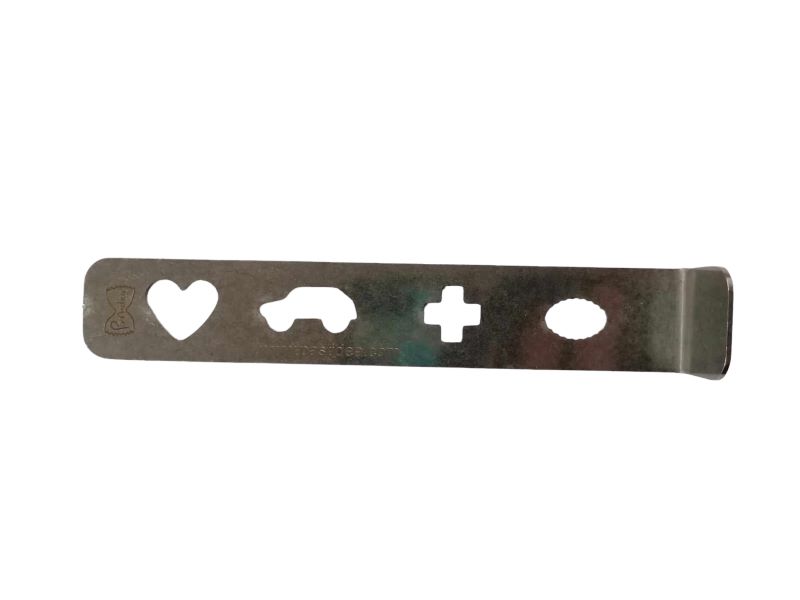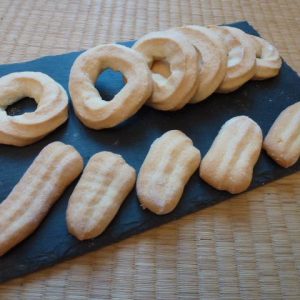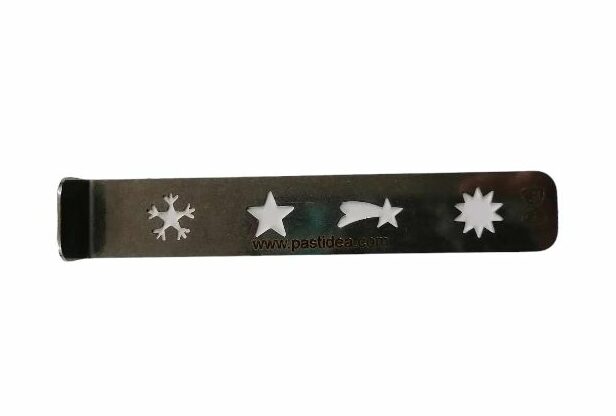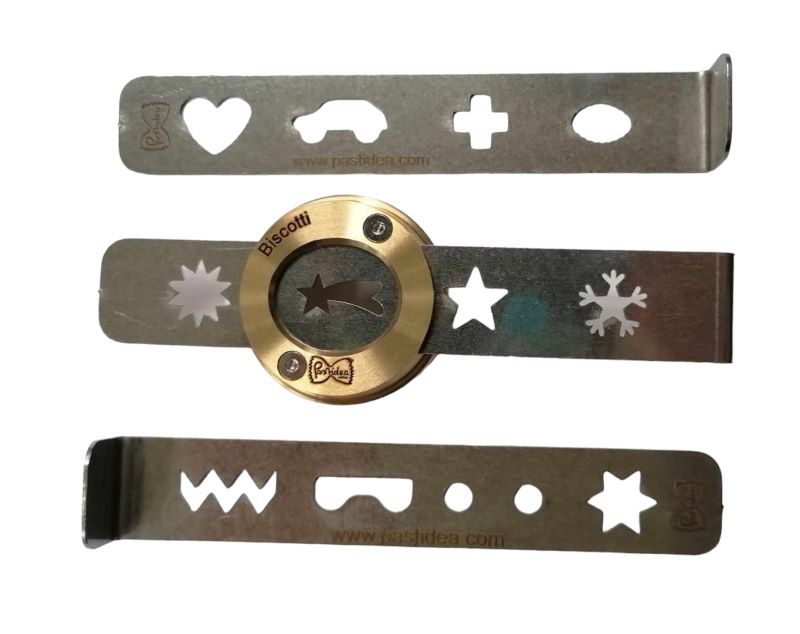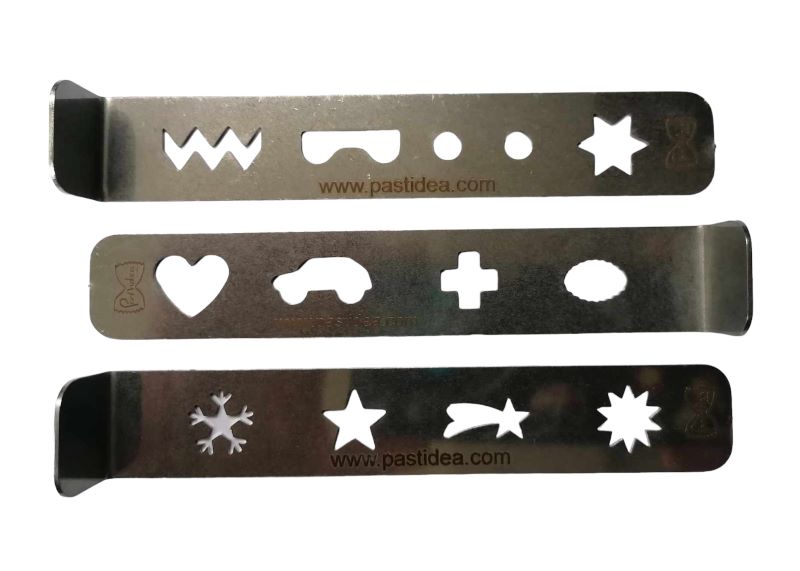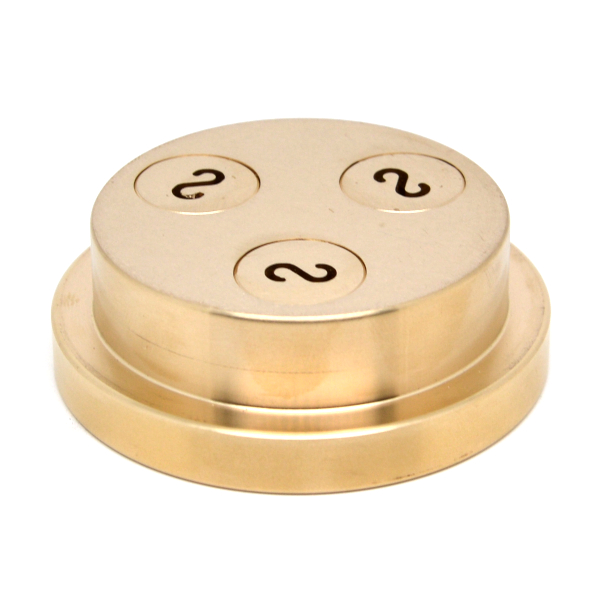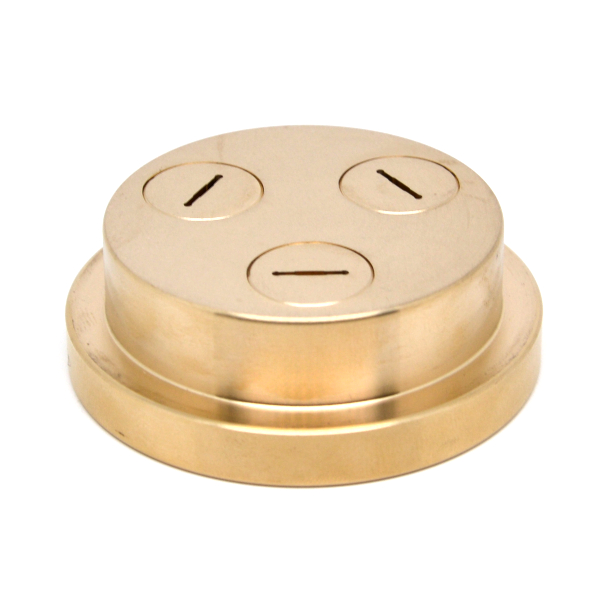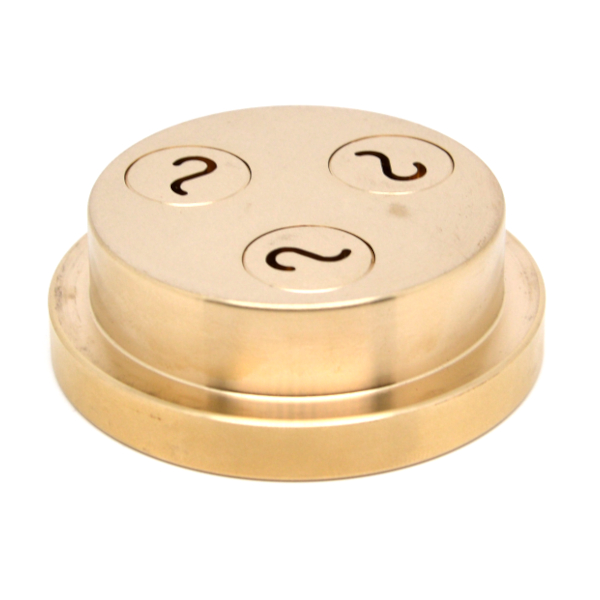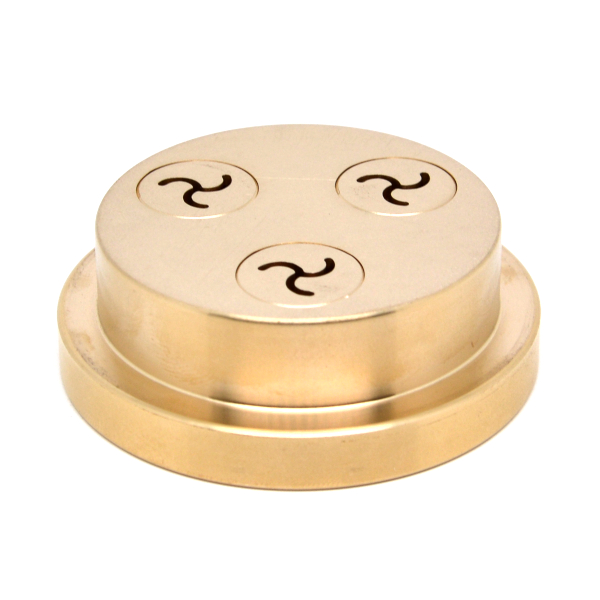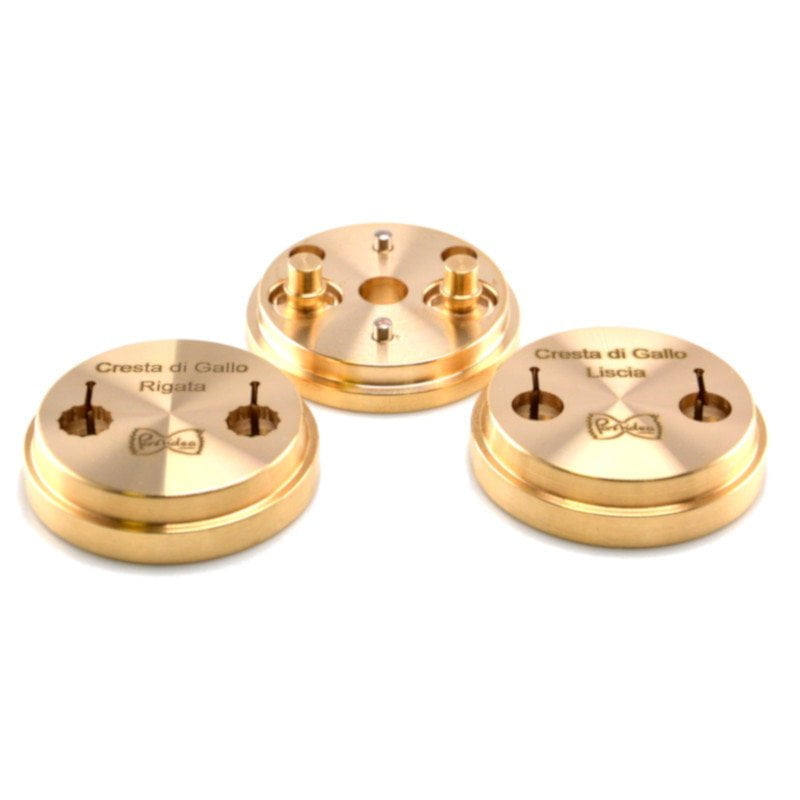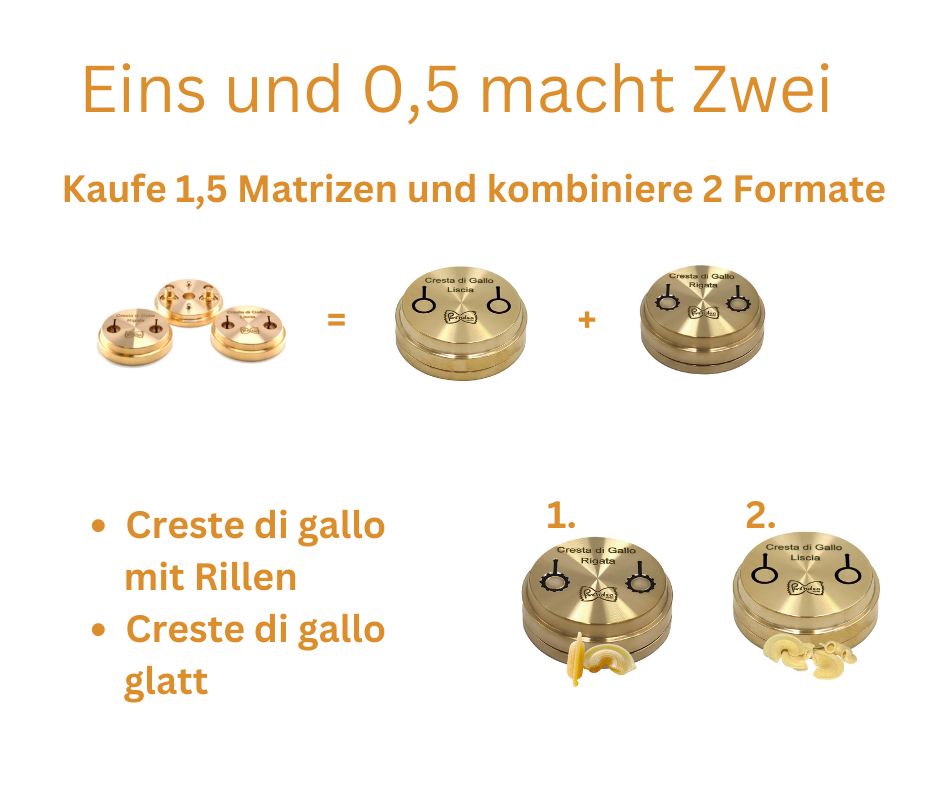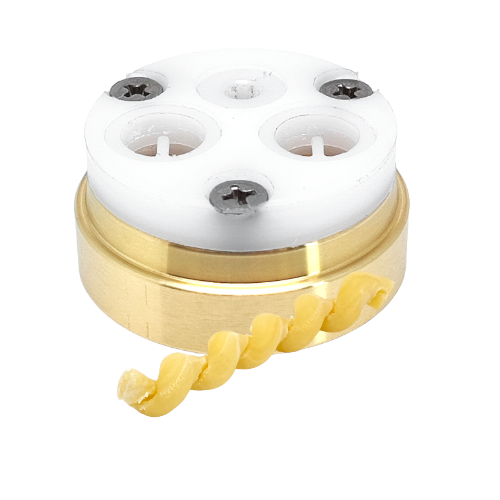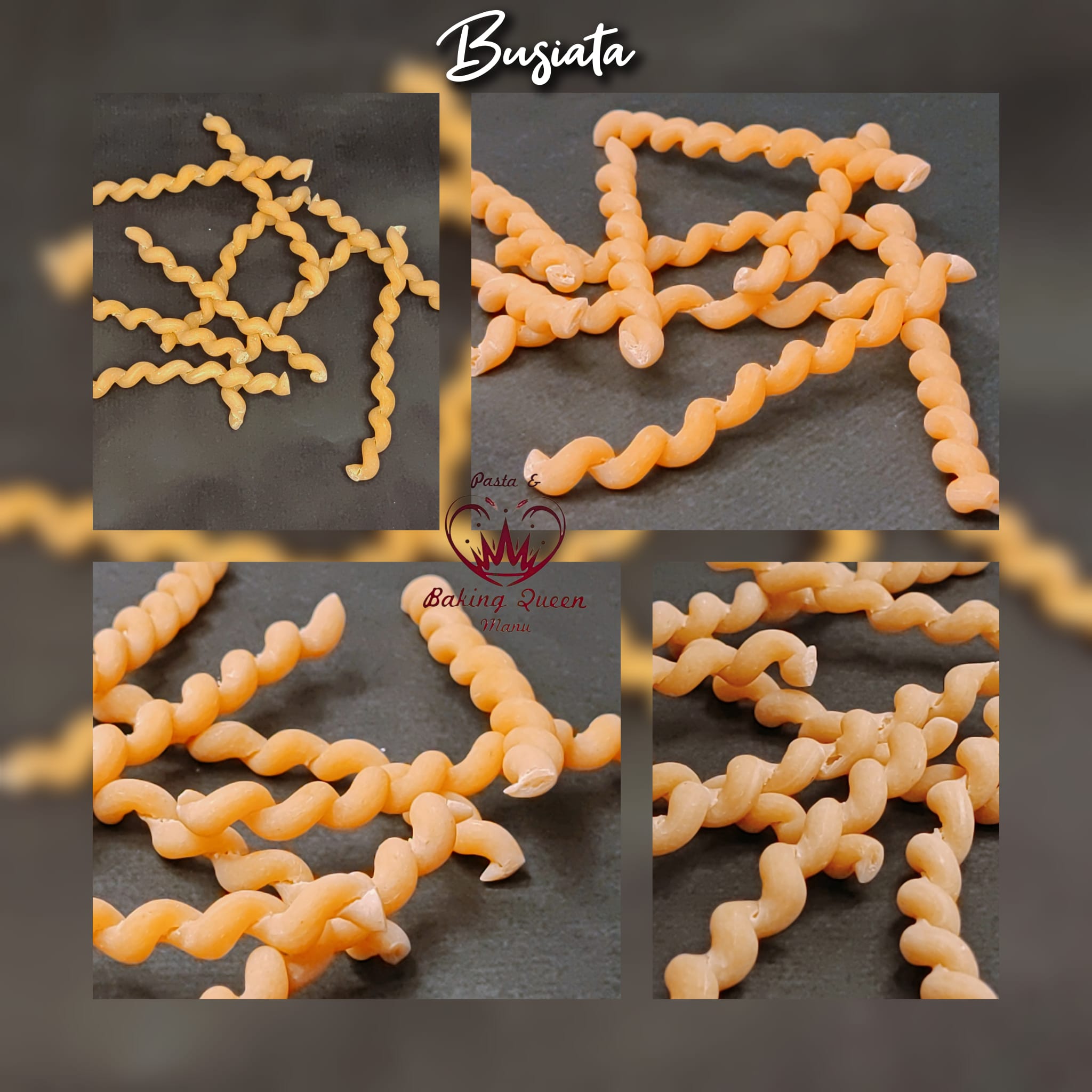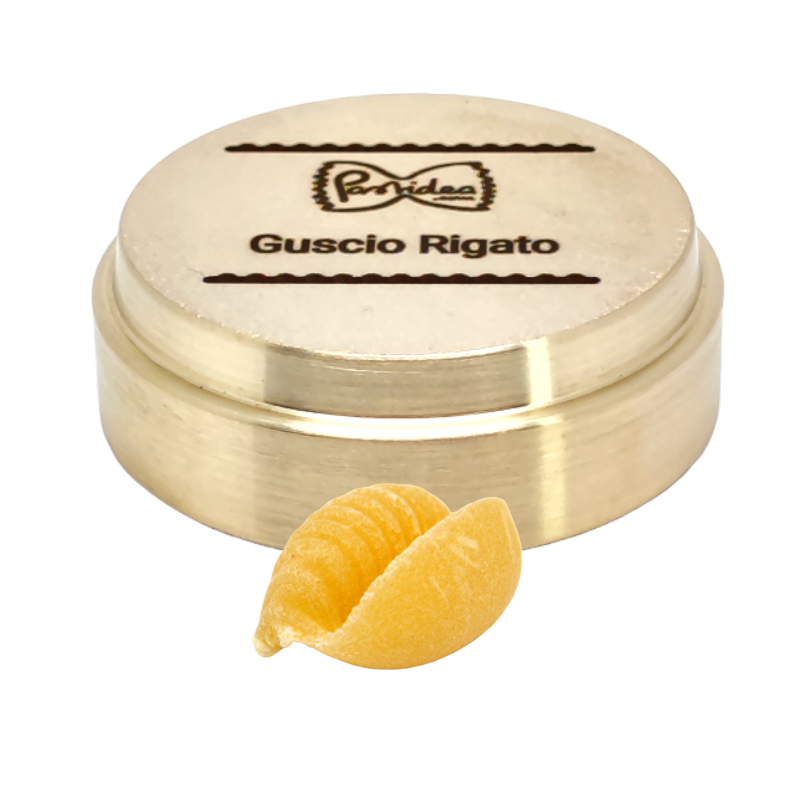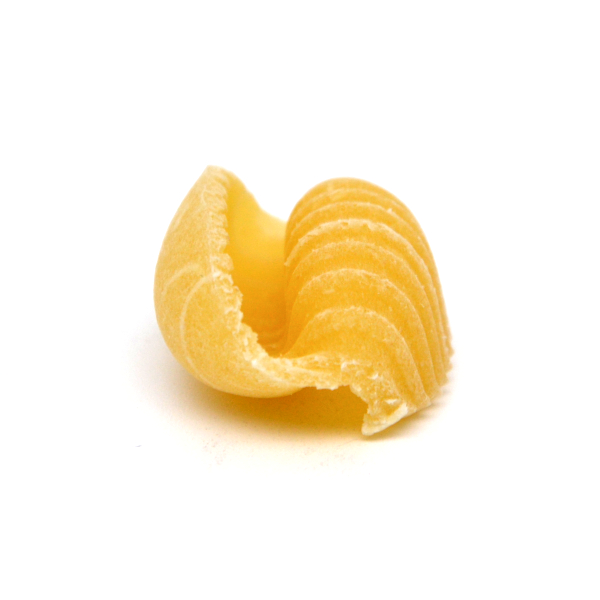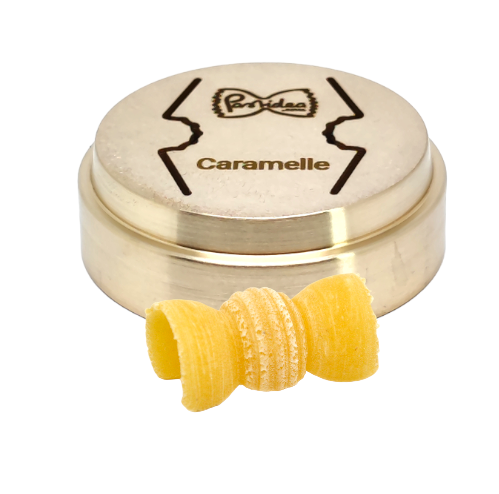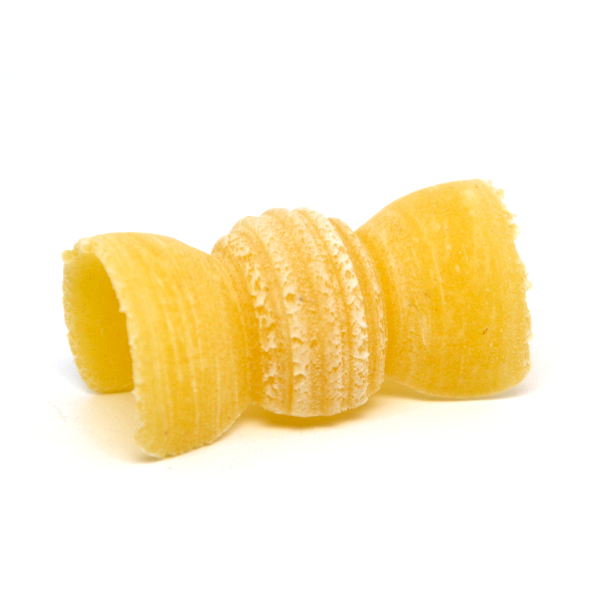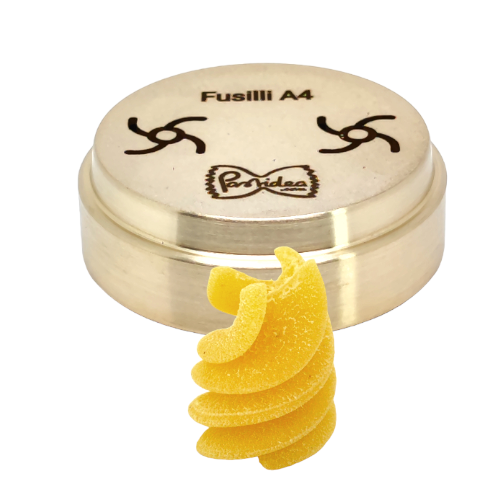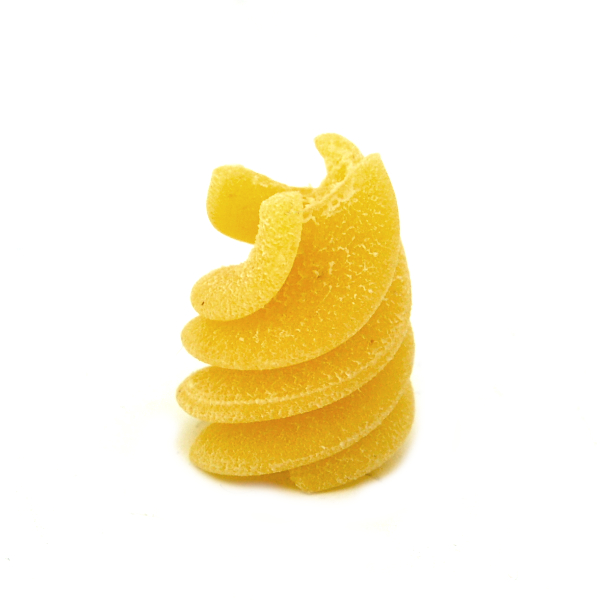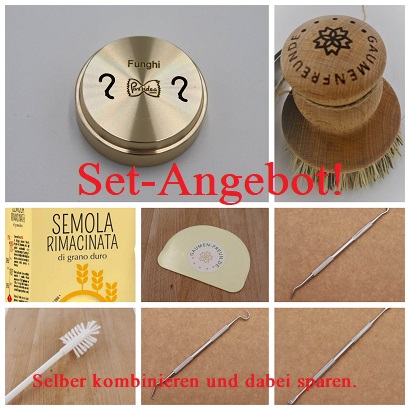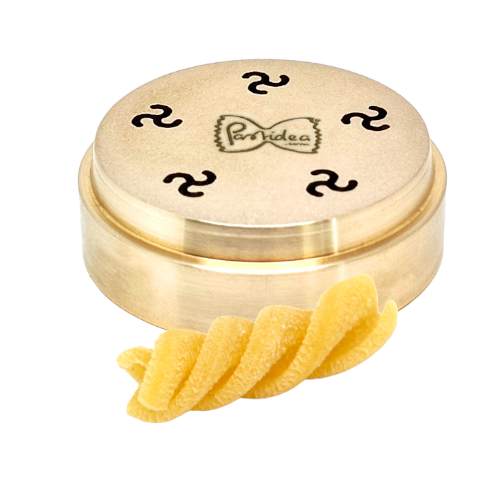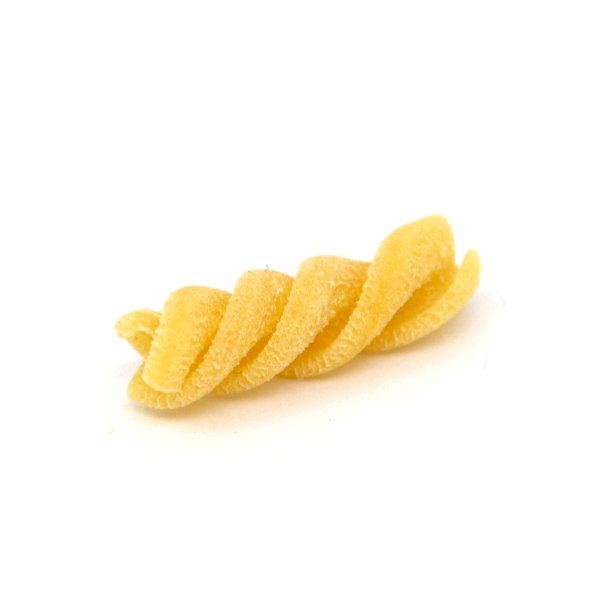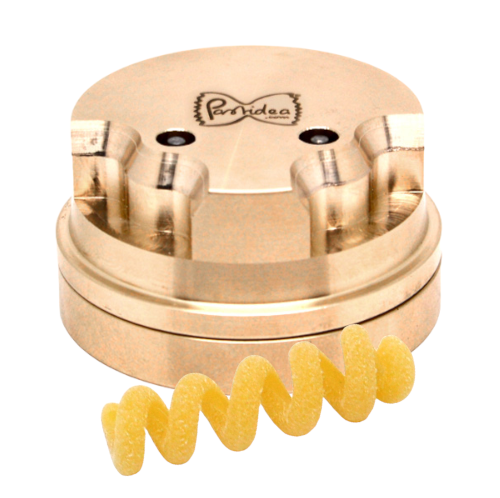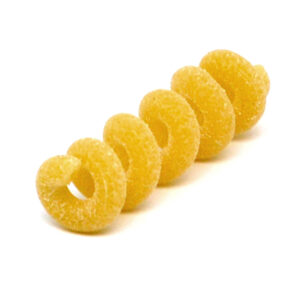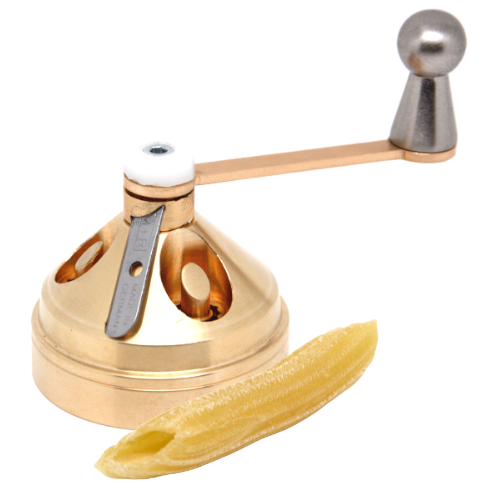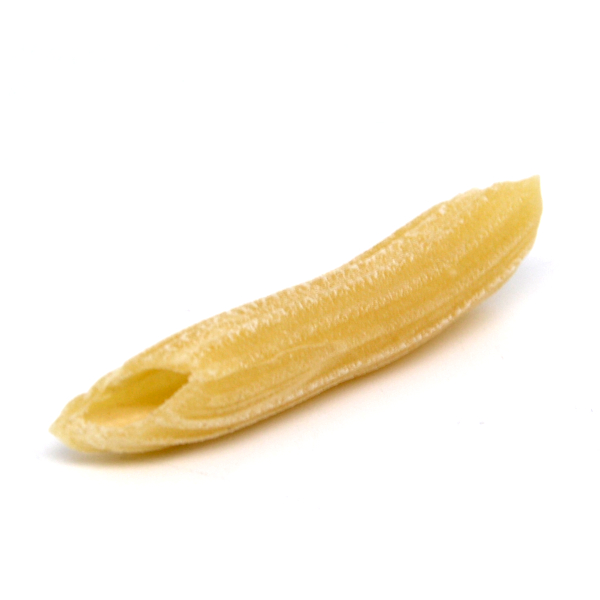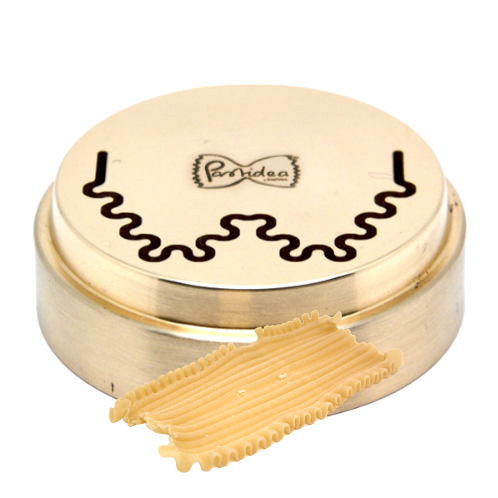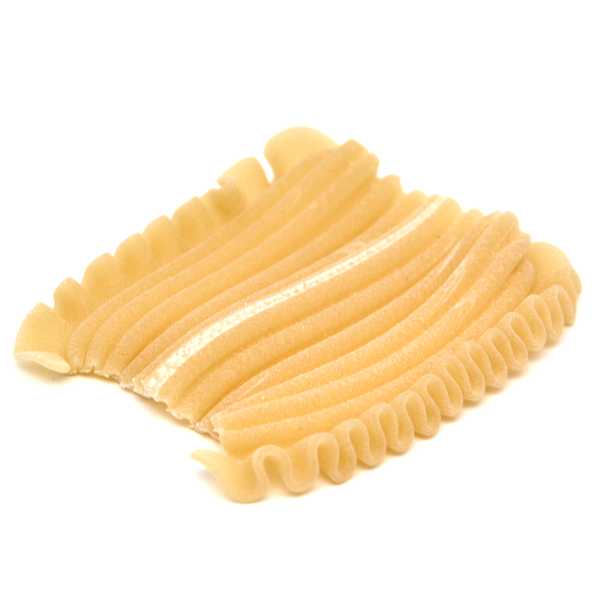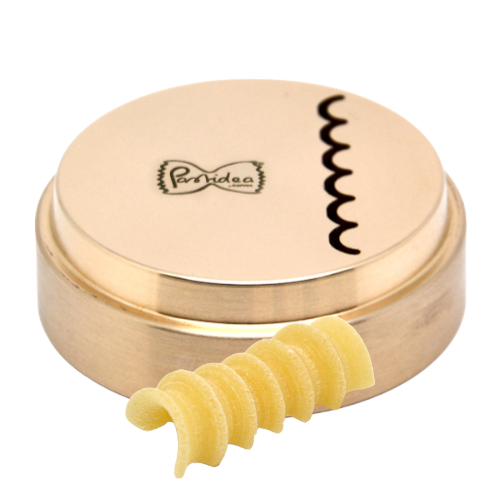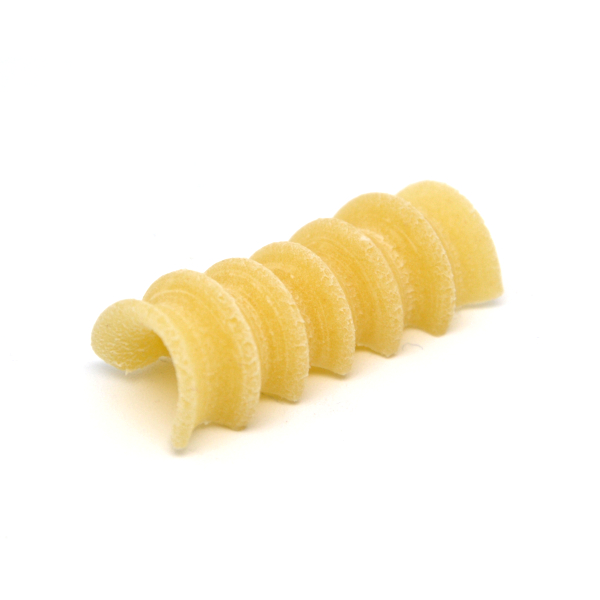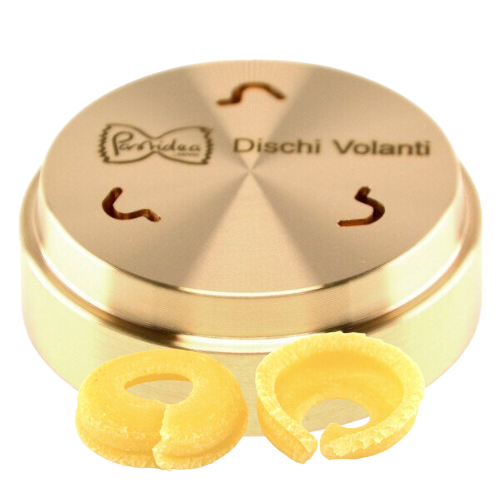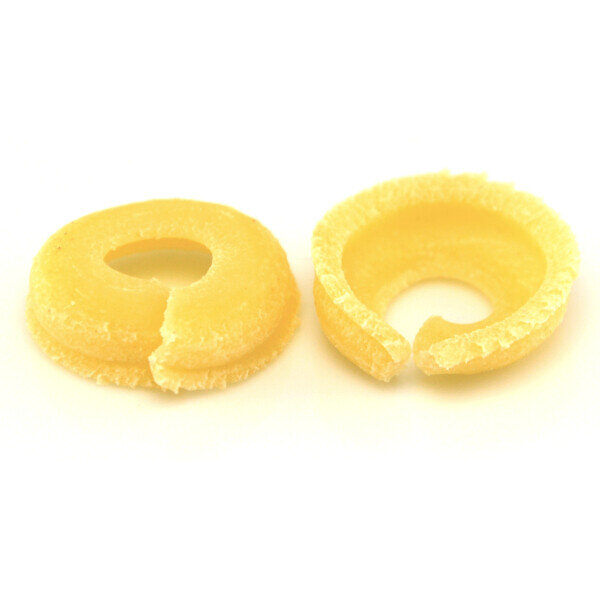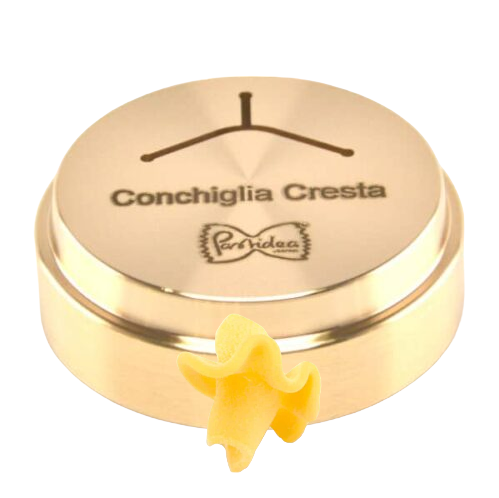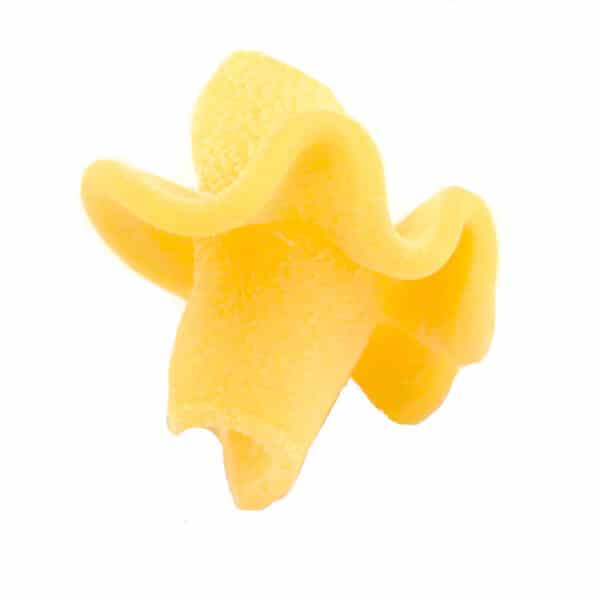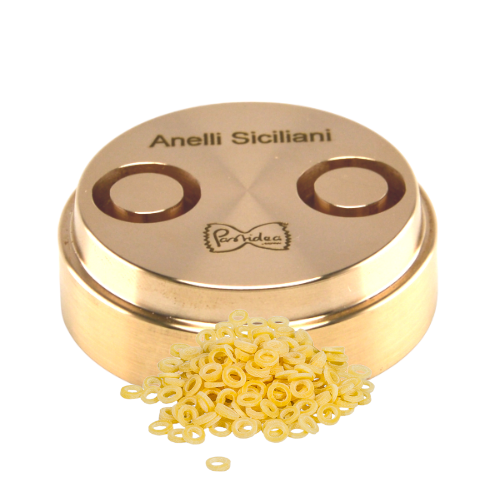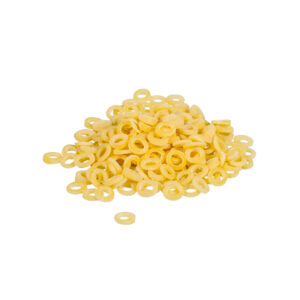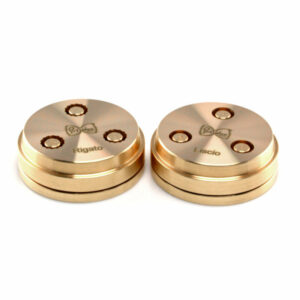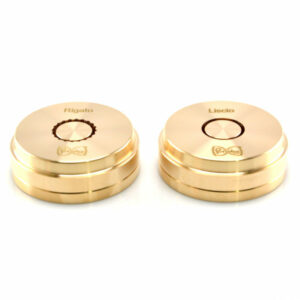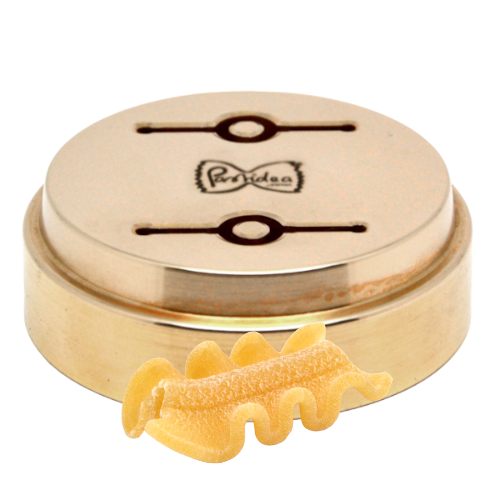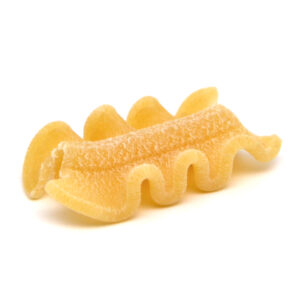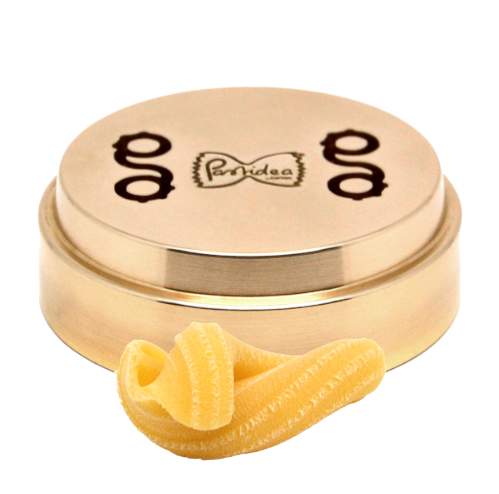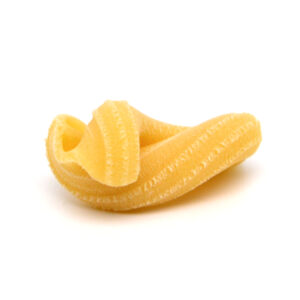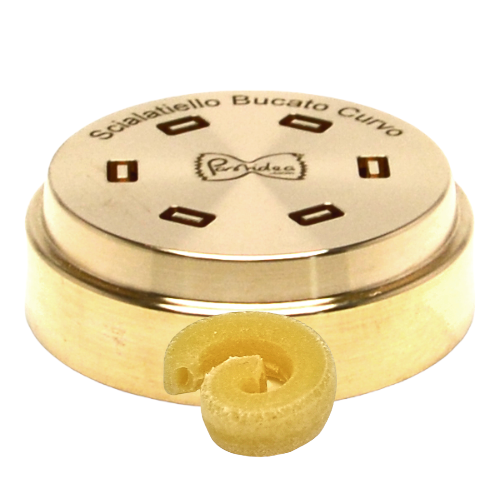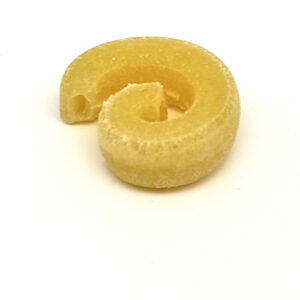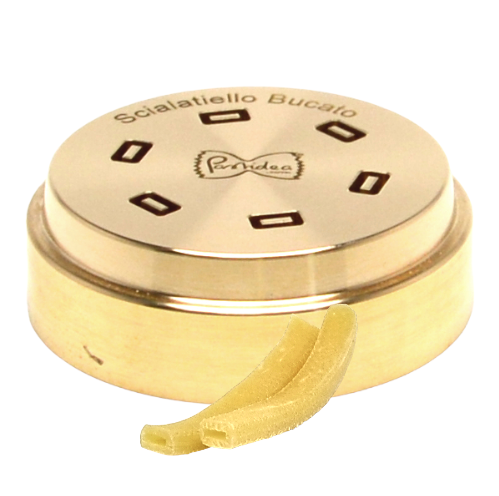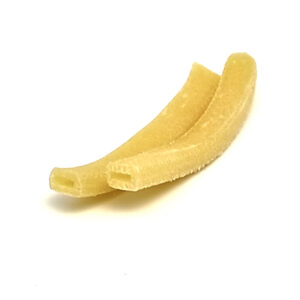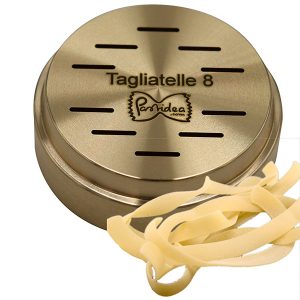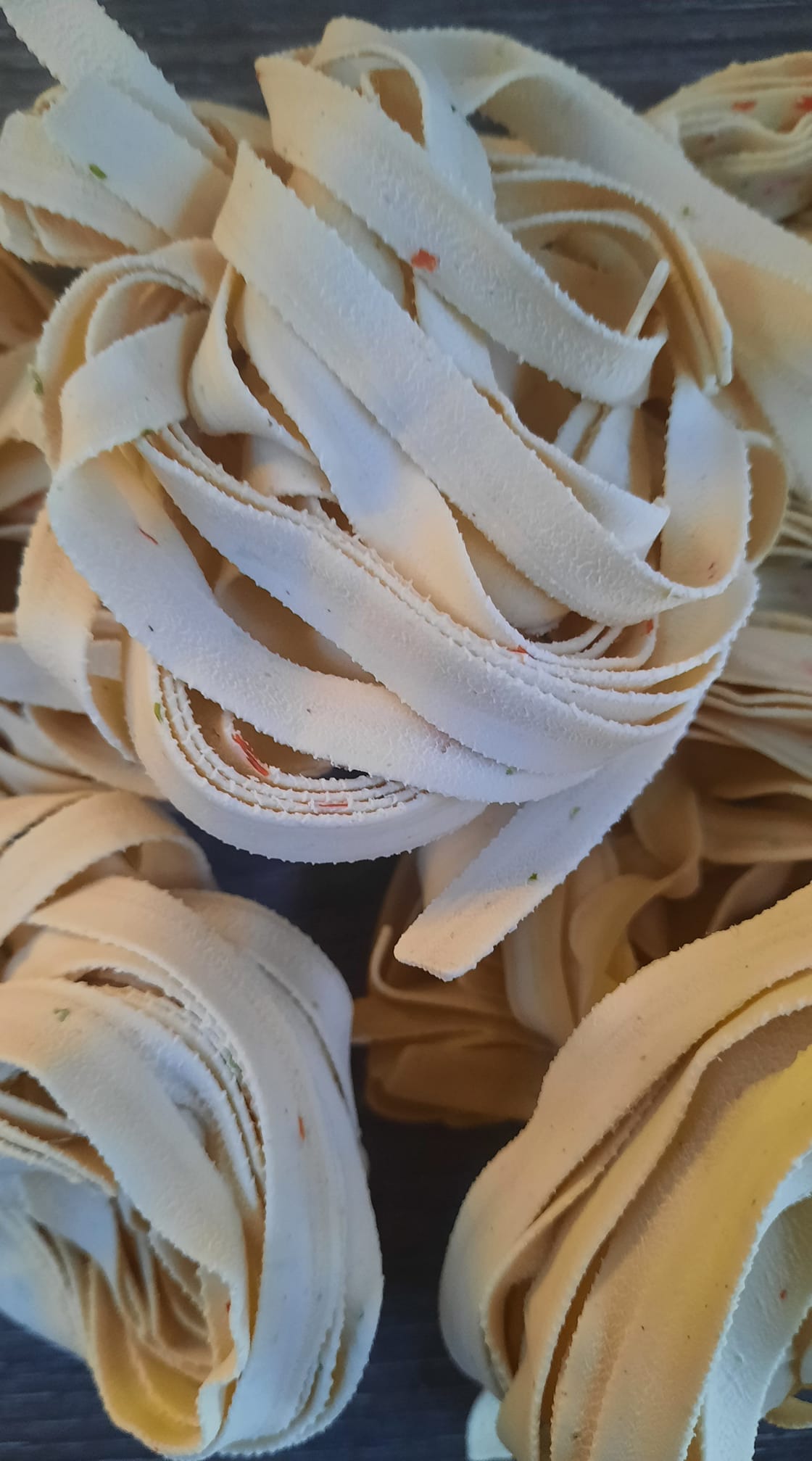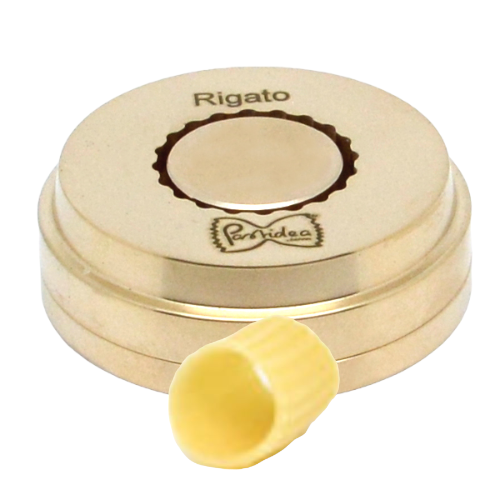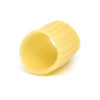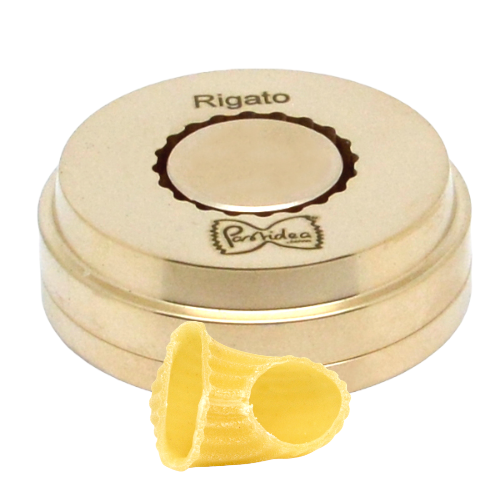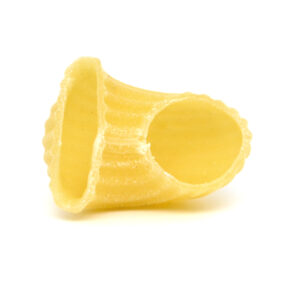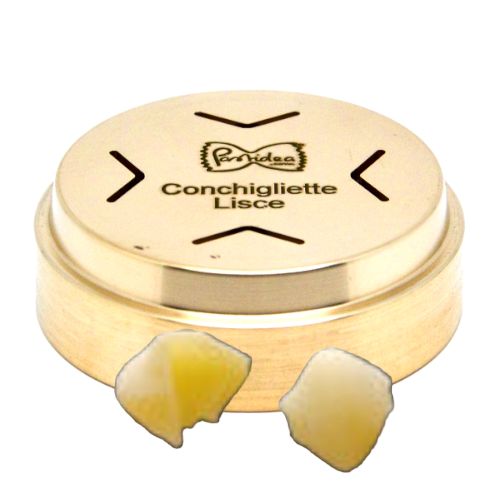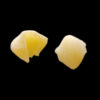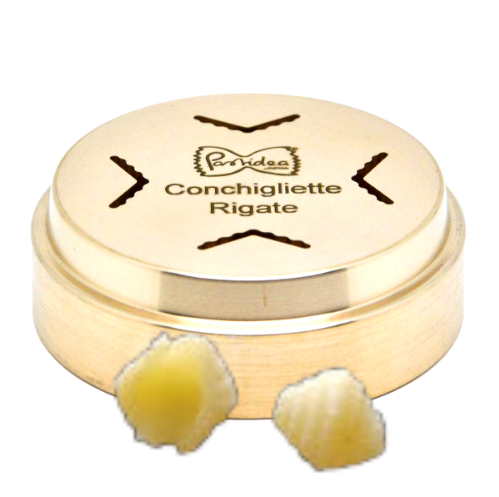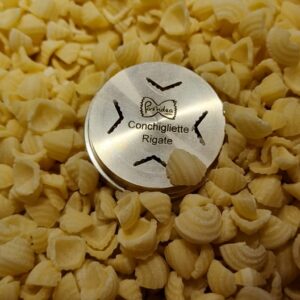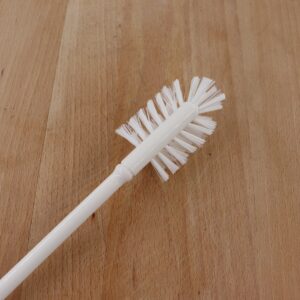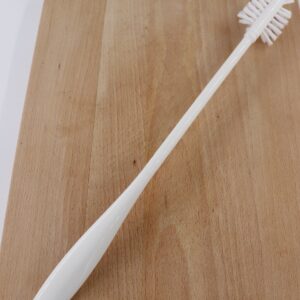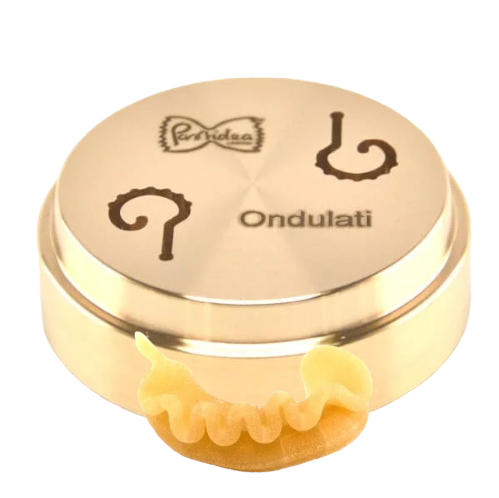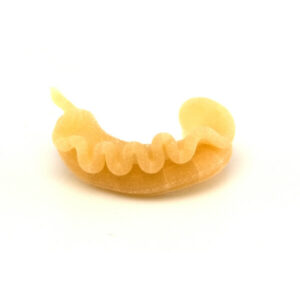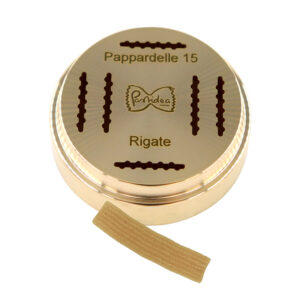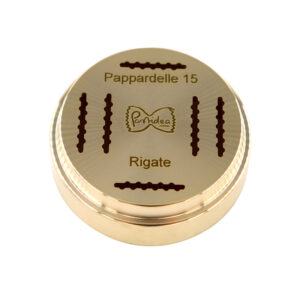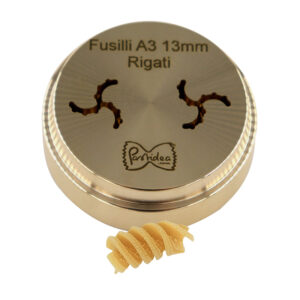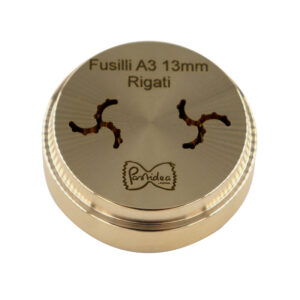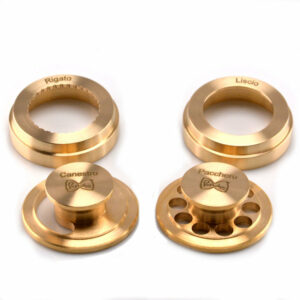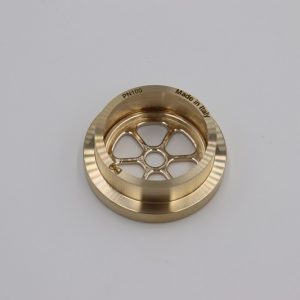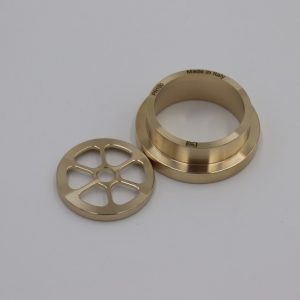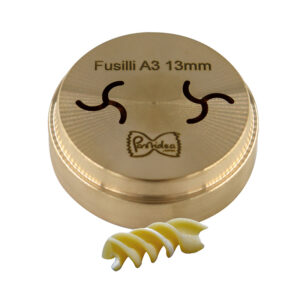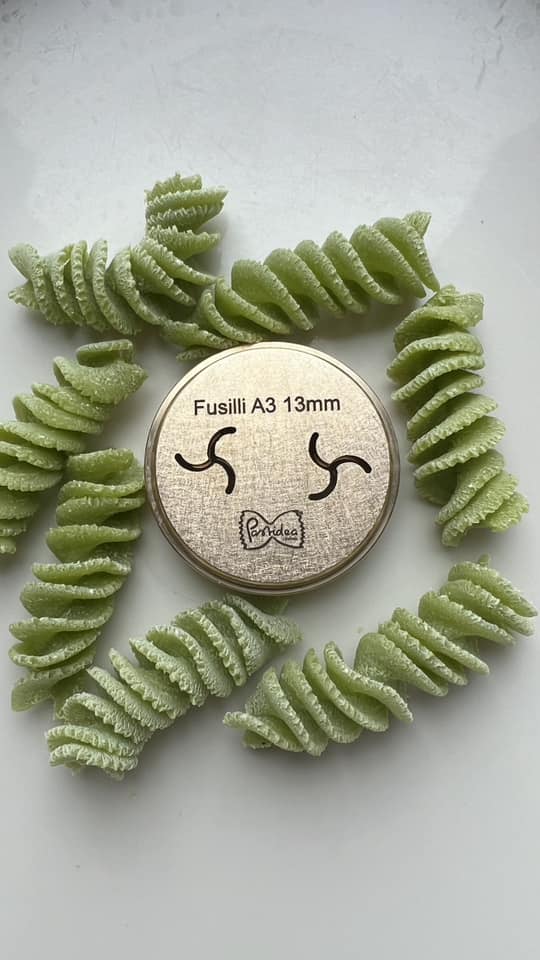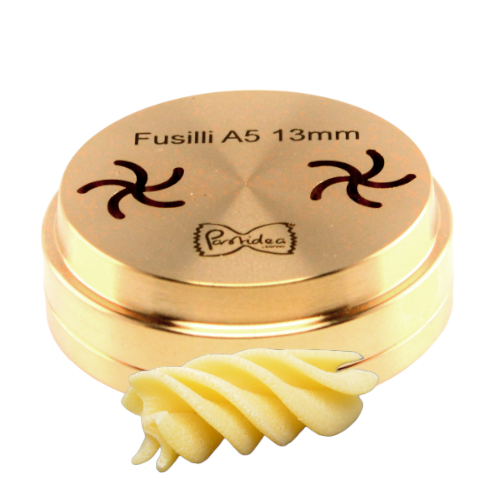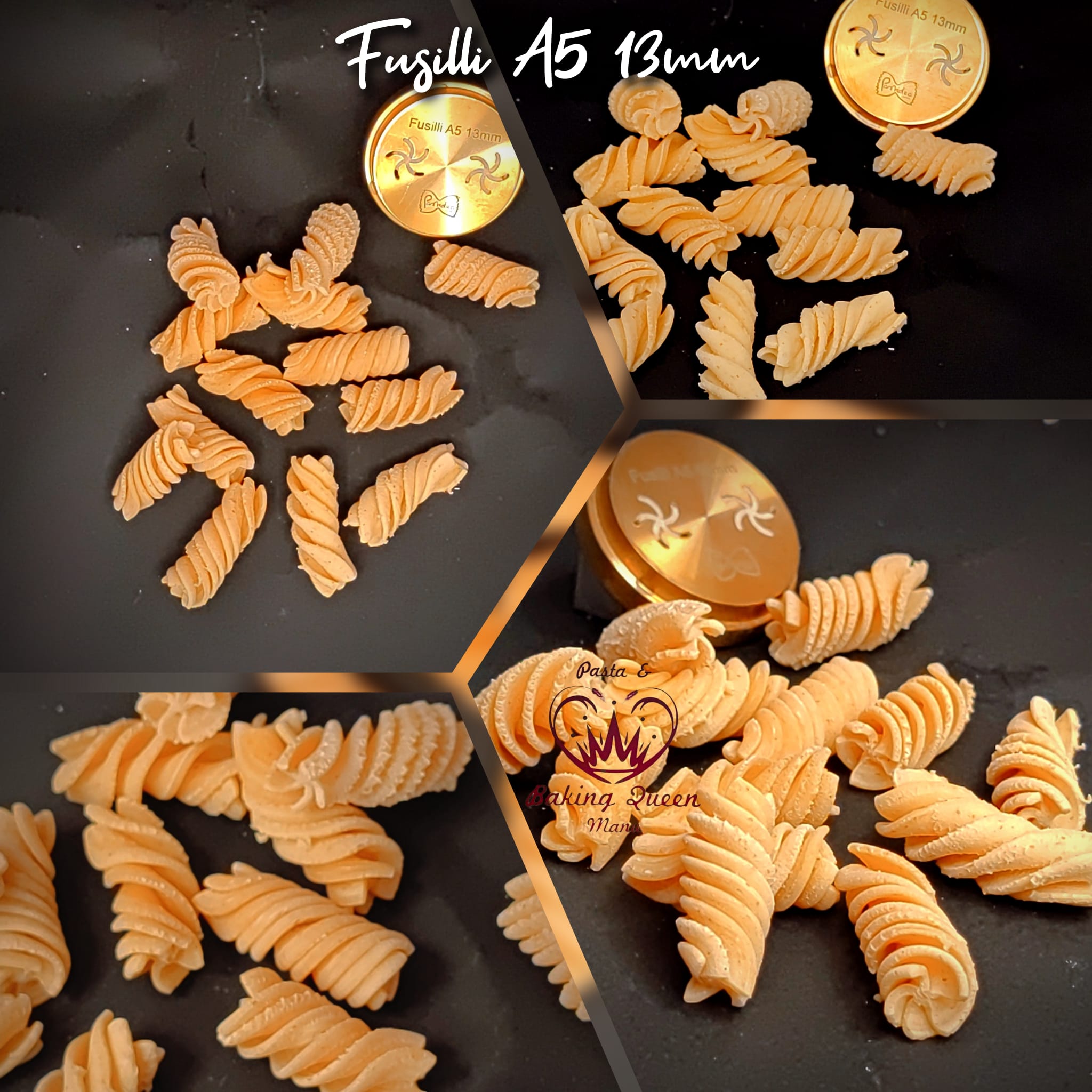10,50 € incl. VAT plus shipping costs
VAT included
excl. Shipping Rate
A push rod for the bronze biscotti / cookies / shortbread die (No.212/213 or HD910040). This push bar expands the possibilities of the shortbread mold for birthdays and other occasions! Suitable for die No. 212/213 (bronze die for biscotti / cookies / shortbread)!
10,50 € incl. VAT plus shipping costs
VAT included
excl. Shipping Rate
A push rod for the bronze biscotti / cookies / shortbread die (No.212/213 or HD910040). This push bar expands the possibilities of the shortbread mold to suit the Christmas season! Suitable for die No. 212/213 (bronze die for biscotti / cookies / shortbread)!
57,60 € incl. VAT plus shipping costs
VAT included
excl. Shipping Rate
Bronze biscotti / cookies / shortbread die with three push bars. This biscuit mold is versatile. A few application examples: a.) Classic shortbread cookies: Make the dough externally (preferably the family recipe as always), cool the dough in the refrigerator so that it hardens. Let the chilled dough pass through the die and bake. Attention: Please do not be surprised if the push rod initially lies loosely in the die. As soon as the dough comes out, it is firmly fixed. b.) Grissini dough: There are two holes on push rod 1. This can also be used to let breadstick dough pass through (dough is also made externally, only put into the machine to be dispensed). c.) Shortcrust pastry/cookie cutter dough: I have also had good experiences with this. The little hearts on push bar 2 were particularly impressive here. To do this, make the cookie dough externally, cool it, then put it into the machine for delivery. These little hearts were exciting because they were so tiny. A big bowl of these incredibly tiny hearts is a treat. Pasta insert for Kenwood AT910, AX910, KAX910ME, PP510, KAX92.AO, KAX91.A0ME. With an adapter, the die can be used in many other pasta machines, e.g. Philips Pastamaker Avance, Philips Viva, KitchenAid, Simac, Ariete, Unold, La Fattorina, Firmar, TR50, Häussler, Korngold, Omega. The die is delivered together with a transparent transport protection box. Why bronze: Bronze dies were the traditional way of making pasta. The pasta made “al bronzo” can only be found rarely and usually only in selected delicatessens. By pressing the pasta dough through the bronze matrices, the surface of the pasta is slightly roughened at the same time, making the pasta easier to grip. This allows the pasta to better absorb the sauce, flavors and spices later on. Would you like to learn more about bronze matrices? Then we recommend this article to you here. Recipe: It is recommended to use durum wheat semolina, enough cold liquid such as water and/or egg. The dough should be kneaded for about 8-10 minutes, this is the only way the gluten from the durum wheat can fully develop. The result should be a moist, crumbly dough. You can find a standard recipe for our matrices here. The matrices can also be used to produce gluten-free pasta. Sustainability: The format of the pastide matrices was originally designed for the Kenwood Pastafresca. By using reducing rings, the bronze matrices can be used on almost all other common pasta machines. All you need is an adapter that fits the machine. This means that even if over time the pasta machine is replaced by a different model due to a defect or for other reasons: the bronze die remains and can continue to be used in the future. Please note: Please note that the matrices may have small dark spots due to the material and production. This is due to the material and does not affect the function in any way. The matrices are not dishwasher safe. Should be dried immediately after cleaning to avoid water stains.
77,00 € incl. VAT plus shipping costs
VAT included
excl. Shipping Rate
Die suitable for Häussler PN100 and Emma, Bottene Lillo due - Casarecce 8mm Why bronze: Bronze matrices were the traditional way of making pasta. The pasta made “al bronzo” can only be found rarely and usually only in selected delicatessens. By pressing the pasta dough through the bronze dies, the surface of the pasta is slightly roughened and the pasta becomes more grippy. This allows the pasta to absorb the sauce, flavors and spices better later. Recipe: It is recommended to use durum wheat semolina, sufficiently cold liquid such as water and/or egg. The dough should be kneaded for about 8-10 minutes so that the gluten from the durum wheat can fully develop. The result should be a moist, crumbly dough. We recommend the following standard recipe for our matrices: Ingredients: 250 g durum wheat semolina or Semola rimacinata Select ONE of the following ingredients: 100 ml cold water or 110 ml liquid consisting of two eggs, the rest of the water, lightly whisked Instructions: Please only use cold liquids . Avoid flour, replace it with semolina. Use binding agents such as xanthan gum, gluten, etc. only to a limited extent, a maximum of 1 teaspoon per 500 grams of dry ingredients. Otherwise the dough will be too firm and the dies could break. If you knead the dough for longer or let it rest, the gluten will develop on its own. You can recognize a good pasta dough by the fact that it is moist and crumbly. The production of gluten-free pasta is also possible with the matrices. Storage: Do you have several bronze matrices and are looking for storage to protect the matrix from dust and darkening caused by light? Then we recommend our storage systems to you here .
77,00 € incl. VAT plus shipping costs
VAT included
excl. Shipping Rate
Die suitable for Häussler PN100 and Emma, Bottene Lillo due - Mafaldine Reginette 9mm Why bronze: Bronze matrices were the traditional way of making pasta. The pasta made “al bronzo” can only be found rarely and usually only in selected delicatessens. By pressing the pasta dough through the bronze dies, the surface of the pasta is slightly roughened and the pasta becomes more grippy. This allows the pasta to absorb the sauce, flavors and spices better later. Recipe: It is recommended to use durum wheat semolina, sufficiently cold liquid such as water and/or egg. The dough should be kneaded for about 8-10 minutes so that the gluten from the durum wheat can fully develop. The result should be a moist, crumbly dough. We recommend the following standard recipe for our matrices: Ingredients: 250 g durum wheat semolina or Semola rimacinata Select ONE of the following ingredients: 100 ml cold water or 110 ml liquid consisting of two eggs, the rest of the water, lightly whisked Instructions: Please only use cold liquids . Avoid flour, replace it with semolina. Use binding agents such as xanthan gum, gluten, etc. only to a limited extent, a maximum of 1 teaspoon per 500 grams of dry ingredients. Otherwise the dough will be too firm and the dies could break. If you knead the dough for longer or let it rest, the gluten will develop on its own. You can recognize a good pasta dough by the fact that it is moist and crumbly. The production of gluten-free pasta is also possible with the matrices. Storage: Do you have several bronze matrices and are looking for storage to protect the matrix from dust and darkening caused by light? Then we recommend our storage systems to you here .
77,00 € incl. VAT plus shipping costs
VAT included
excl. Shipping Rate
Die suitable for Häussler PN100 and Emma, Bottene Lillo due - Funghi / Trottole 10mm Why bronze: Bronze matrices were the traditional way of making pasta. The pasta made “al bronzo” can only be found rarely and usually only in selected delicatessens. By pressing the pasta dough through the bronze dies, the surface of the pasta is slightly roughened and the pasta becomes more grippy. This allows the pasta to absorb the sauce, flavors and spices better later. Recipe: It is recommended to use durum wheat semolina, sufficiently cold liquid such as water and/or egg. The dough should be kneaded for about 8-10 minutes so that the gluten from the durum wheat can fully develop. The result should be a moist, crumbly dough. We recommend the following standard recipe for our matrices: Ingredients: 250 g durum wheat semolina or Semola rimacinata Select ONE of the following ingredients: 100 ml cold water or 110 ml liquid consisting of two eggs, the rest of the water, lightly whisked Instructions: Please only use cold liquids . Avoid flour, replace it with semolina. Use binding agents such as xanthan gum, gluten, etc. only to a limited extent, a maximum of 1 teaspoon per 500 grams of dry ingredients. Otherwise the dough will be too firm and the dies could break. If you knead the dough for longer or let it rest, the gluten will develop on its own. You can recognize a good pasta dough by the fact that it is moist and crumbly. The production of gluten-free pasta is also possible with the matrices. Storage: Do you have several bronze matrices and are looking for storage to protect the matrix from dust and darkening caused by light? Then we recommend our storage systems to you here .
77,00 € incl. VAT plus shipping costs
VAT included
excl. Shipping Rate
Die suitable for Häussler PN100 and Emma, Bottene Lillo due - Fusilli A3 10mm Why bronze: Bronze matrices were the traditional way of making pasta. The pasta made “al bronzo” can only be found rarely and usually only in selected delicatessens. By pressing the pasta dough through the bronze dies, the surface of the pasta is slightly roughened and the pasta becomes more grippy. This allows the pasta to absorb the sauce, flavors and spices better later. Recipe: It is recommended to use durum wheat semolina, sufficiently cold liquid such as water and/or egg. The dough should be kneaded for about 8-10 minutes so that the gluten from the durum wheat can fully develop. The result should be a moist, crumbly dough. We recommend the following standard recipe for our matrices: Ingredients: 250 g durum wheat semolina or Semola rimacinata Select ONE of the following ingredients: 100 ml cold water or 110 ml liquid consisting of two eggs, the rest of the water, lightly whisked Instructions: Please only use cold liquids . Avoid flour, replace it with semolina. Use binding agents such as xanthan gum, gluten, etc. only to a limited extent, a maximum of 1 teaspoon per 500 grams of dry ingredients. Otherwise the dough will be too firm and the dies could break. If you knead the dough for longer or let it rest, the gluten will develop on its own. You can recognize a good pasta dough by the fact that it is moist and crumbly. The production of gluten-free pasta is also possible with the matrices. Storage: Do you have several bronze matrices and are looking for storage to protect the matrix from dust and darkening caused by light? Then we recommend our storage systems to you here .
58,80 € incl. VAT plus shipping costs
VAT included
excl. Shipping Rate
Die made of bronze Creste di gallo liscio / rigato cockscomb smooth and with grooved matrix Creste di gallo rigato plus upper part liscio. The top part can be combined to create the formats Creste di gallo rigato (with grooves) Creste di gallo liscio (smooth) pasta insert for Kenwood AT910, AX910, KAX910ME, PP510, KAX92.AO, KAX91.A0ME. With an adapter, the die can be used in many other pasta machines, e.g. Philips Pastamaker Avance, Philips Viva, KitchenAid, Simac, Ariete, Unold, La Fattorina, Firmar, TR50, Häussler, Korngold, Omega. The die is delivered together with a transparent transport protection box. Why bronze: Bronze dies were the traditional way of making pasta. The pasta made “al bronzo” can only be found rarely and usually only in selected delicatessens. By pressing the pasta dough through the bronze matrices, the surface of the pasta is slightly roughened at the same time, making the pasta easier to grip. This allows the pasta to better absorb the sauce, flavors and spices later on. Would you like to learn more about bronze matrices? Then we recommend this article to you here. Recipe: It is recommended to use durum wheat semolina, enough cold liquid such as water and/or egg. The dough should be kneaded for about 8-10 minutes, this is the only way the gluten from the durum wheat can fully develop. The result should be a moist, crumbly dough. You can find a standard recipe for our matrices here. The matrices can also be used to produce gluten-free pasta. Sustainability: The format of the pastide matrices was originally designed for the Kenwood Pastafresca. By using reducing rings, the bronze matrices can be used on almost all other common pasta machines. All you need is an adapter that fits the machine. This means that even if over time the pasta machine is replaced by a different model due to a defect or for other reasons: the bronze die remains and can continue to be used in the future. Please note: Please note that the matrices may have small dark spots due to the material and production. This is due to the material and does not affect the function in any way. The matrices are not dishwasher safe. Should be dried immediately after cleaning to avoid water stains.
49,90 € incl. VAT plus shipping costs
VAT included
excl. Shipping Rate
Die made of BRONZE - Busiata
Pasta insert for Kenwood AT910, AX910, KAX910ME, PP510, KAX92.AO, KAX91.A0ME. With adapter the matrix can be used in many other pasta machines, e.g.: Philips Pastamaker Avance, Philips Viva, KitchenAid, Simac, Ariete, Unold, La Fattorina, Firmar, TR50, Häussler, Korngold, Omega. Size: 5 mm Thickness: 1,5 mm The pasta in this die takes you to the south of Italy. It originally comes from Trapani/Sicily, but this very traditional type of pasta is also widespread in Calabria. With just a few ingredients you can conjure up Busiate alla Trapanese, a Sicilian delicacy with, among other things, pecorino and almonds, on the table. But you can also find them “alla Norma” ie with fried eggplants more often. The name Busiata comes from "busa", the Italian word for a style. This refers to the style of the plant Ampelodesmos mauritanicus, around which a strip of pasta is traditionally wrapped to create a dried busiata. By the way, this pasta is traditionally only made with durum wheat semolina and water, no eggs. The coiled shape makes it resemble a screw, pretty awesome for holding the sauce. But try it yourself... Dough / Ingredients: 250 g durum wheat semolina or Semola rimacinata Select ONE of the following ingredients: 100 ml cold water or 110 ml liquid consisting of two eggs, the rest of the water, lightly whisked Step-by-step instructions for breastfeeding with the emeibaby carrier: Please only use cold liquids. Avoid flour, replace it with semolina. Use binding agents such as xanthan gum, gluten, etc. only to a limited extent, a maximum of 1 teaspoon per 500 grams of dry ingredients. Otherwise the dough will be too firm and the dies could break. If you knead the dough for longer or let it rest, the gluten will develop on its own. You can recognize a good pasta dough by the fact that it is moist and crumbly. The production of gluten-free pasta is also possible with the matrices. Immerse yourself in the world of your own pasta production with your palate friends. The taste of fresh homemade pasta is incomparably good. Do you have several matrices and are looking for storage to protect the matrix from dust and darkening caused by light? Then we recommend our storage systems, which you can find in our range.32,90 € incl. VAT plus shipping costs
VAT included
excl. Shipping Rate
Bronze matrix Guscio Rigato
A guscio is a bowl. Rigato = with stripes. in this case even a double shell. Attention: If no double switch comes out, please insert the die the other way around so that the writing points downwards. Pasta insert for Kenwood PastaFresca AT910, AX910, KAX910ME, PP510, KAX92.AO, KAX91.A0ME. With adapter the matrix can be used in many other pasta machines, e.g.: Philips Pastamaker Avance, Philips Viva, KitchenAid, Simac, Ariete, Unold, La Fattorina, Firmar, TR50, Häussler, Korngold, Omega. Size: 27 mm Thickness: 1 mm Dough / Ingredients: 250 g durum wheat semolina or Semola rimacinata Select ONE of the following ingredients: 100 ml cold water or 110 ml liquid consisting of two eggs, the rest of the water, lightly whisked Step-by-step instructions for breastfeeding with the emeibaby carrier: Please only use cold liquids. Avoid flour, replace it with semolina. Use binding agents such as xanthan gum, gluten, etc. only to a limited extent, a maximum of 1 teaspoon per 500 grams of dry ingredients. Otherwise the dough will be too firm and the dies could break. If you knead the dough for longer or let it rest, the gluten will develop on its own. You can recognize a good pasta dough by the fact that it is moist and crumbly. The production of gluten-free pasta is also possible with the matrices. Immerse yourself in the world of your own pasta production with your palate friends. The taste of fresh homemade pasta is incomparably good. Do you have several matrices and are looking for storage to protect the matrix from dust and darkening caused by light? Then we recommend our storage systems, which you can find in our range.32,90 € incl. VAT plus shipping costs
VAT included
excl. Shipping Rate
Die made of bronze candies Caramelle
Pasta insert for Kenwood Pasta Fresca AT910, AX910, KAX910ME, PP510, KAX92.AO, KAX91.A0ME. With adapter the matrix can be used in many other pasta machines, e.g.: Philips Pastamaker Avance, Philips Viva, KitchenAid, Simac, Ariete, Unold, La Fattorina, Firmar, TR50, Häussler, Korngold, Omega. Size: 30 mm Thickness: 1 mm The shape is based on the filled pasta caramelle, which is found in particular in Emilia-Romagna and is served around Parma and Modena on holidays such as Easter or Christmas. Pasta caramelle don't have any particular tradition, but they are simply beautiful to look at, whether filled or unfilled, as in this case. Anyone who has children in their family will surely be rewarded with beaming eyes when they see this pasta on their plates. Dough / Ingredients: 250 g durum wheat semolina or Semola rimacinata Select ONE of the following ingredients: 100 ml cold water or 110 ml liquid consisting of two eggs, the rest of the water, lightly whisked Step-by-step instructions for breastfeeding with the emeibaby carrier: Please only use cold liquids. Avoid flour, replace it with semolina. Use binding agents such as xanthan gum, gluten, etc. only to a limited extent, a maximum of 1 teaspoon per 500 grams of dry ingredients. Otherwise the dough will be too firm and the dies could break. If you knead the dough for longer or let it rest, the gluten will develop on its own. You can recognize a good pasta dough by the fact that it is moist and crumbly. The production of gluten-free pasta is also possible with the matrices. Immerse yourself in the world of your own pasta production with your palate friends. The taste of fresh homemade pasta is incomparably good. Do you have several matrices and are looking for storage to protect the matrix from dust and darkening caused by light? Then we recommend our storage systems, which you can find in our range.32,90 € incl. VAT plus shipping costs
VAT included
excl. Shipping Rate
Bronze fusilli die A4 13 mm Pasta insert for Kenwood Pasta Fresca AT910, AX910, KAX910ME, PP510, KAX92.AO, KAX91.A0ME. With adapter the matrix can be used in many other pasta machines, e.g.: Philips Pastamaker Avance, Philips Viva, KitchenAid, Simac, Ariete, Unold, La Fattorina, Firmar, TR50, Häussler, Korngold, Omega. Size: 13 mm Thickness: 1 mm One of the most famous noodles in Germany is fusilli. They are often called Spirelli, Rotini and rarely Eliche. The word fusilli comes from the Italian word “fuso”, which means spindle. In manual fusilli production, spaghetti is still wrapped around a spindle. According to legend, fusilli were invented at the court in Florence around 1550. The cook's son sat under the kitchen table and played with fallen pasta scraps that he wrapped around a knitting needle. These were the first fusillis. Not quite as clear, but much more likely, is the story that the Fusillis originated in southern Italy. At some point, spaghetti began to be rolled up in a spiral for drying, as this rotation made it much easier to dry and store. What is undisputed is that the twists mean that the sauce combines particularly well with the pasta. Fusillis are easy to dry. Fusillis are available with 2, 3, 4 or 5 wings. You can see how many propeller blades the Fusilli has by the die shape and also the die name. Ie a Fusilli A2 has two wings, an A3 has 3 wings, an A4 has 4 wings, an A5 has 5 wings. Dough / Ingredients: 250 g durum wheat semolina or Semola rimacinata Select ONE of the following ingredients: 100 ml cold water or 110 ml liquid consisting of two eggs, the rest of the water, lightly whisked Step-by-step instructions for breastfeeding with the emeibaby carrier: Please only use cold liquids. Avoid flour, replace it with semolina. Use binding agents such as xanthan gum, gluten, etc. only to a limited extent, a maximum of 1 teaspoon per 500 grams of dry ingredients. Otherwise the dough will be too firm and the dies could break. If you knead the dough for longer or let it rest, the gluten will develop on its own. You can recognize a good pasta dough by the fact that it is moist and crumbly. The production of gluten-free pasta is also possible with the matrices. Immerse yourself in the world of your own pasta production with your palate friends. The taste of fresh homemade pasta is incomparably good. Do you have several matrices and are looking for storage to protect the matrix from dust and darkening caused by light? Then we recommend our storage systems, which you can find in our range.
Ab 0,00 €
VAT included
excl. Shipping Rate
Set offer - die bronze + accessories This set consists of a die of your choice Pasta insert made of bronze, 4,5 cm diameter plus optional: plastic dough card with beveled edge and Gaumen-Freun.de embossing plus optional: cleaning tools plus optional: Semola durum wheat semolina twice ground It recommends Always add a little more liquid than the pasta maker indicates and only use cold liquids. The dough should be moist and crumbly. We recommend the following standard recipe for our matrices: Ingredients: 250 g durum wheat semolina or Semola rimacinata Select ONE of the following ingredients: 100 ml cold water or 110 ml liquid consisting of two eggs, the rest of the water, lightly whisked Step-by-step instructions for breastfeeding with the emeibaby carrier: Please only use cold liquids. Avoid flour, replace it with semolina. Use binding agents such as xanthan gum, gluten, etc. only to a limited extent, a maximum of 1 teaspoon per 500 grams of dry ingredients. Otherwise the dough will be too firm and the dies could break. If you knead the dough for longer or let it rest, the gluten will develop on its own. You can recognize a good pasta dough by the fact that it is moist and crumbly. The production of gluten-free pasta is also possible with the matrices. Immerse yourself in the world of your own pasta production with your palate friends. The taste of fresh homemade pasta is incomparably good.
32,90 € incl. VAT plus shipping costs
VAT included
excl. Shipping Rate
Die in BRONZE Fusillini A3 6,5 mm for Size: 6,5 mm Strength: 1 mm Pasta insert for Kenwood PastaFresca With Adapter The die can be used in many other pasta machines, e.g.: Philips Pastamaker Avance, Philips Viva, KitchenAid, Simac, Ariete, Unold, La Fattorina, Firmar, TR50, Häussler, Korngold, Omega
Whenever an -ini is added to the end of a word in Italian, it becomes cute.The word fusilli comes from the Italian word “fuso”, which means spindle. In manual fusilli production, spaghetti is still wrapped around a spindle. According to legend, fusilli were invented at the court in Florence around 1550. The cook's son sat under the kitchen table and played with fallen pasta scraps that he wrapped around a knitting needle. These were the first fusillis. Not quite as clear, but much more likely, is the story that the Fusillis originated in southern Italy. At some point, spaghetti began to be rolled up in a spiral for drying, as this rotation made it much easier to dry and store. What is undisputed is that the twists mean that the sauce combines particularly well with the pasta. Fusillis are easy to dry. Fusillis are available with 2, 3 or 5 wings. You can see how many propeller blades the Fusilli has by the die shape and also the die name. Ie a Fusilli A2 has two wings, an A3 has 3 wings, an A5 has 5 wings. Pasta insert for Kenwood AT910, AX910, KAX910ME, PP510, KAX92.AO, KAX91.A0ME. With an adapter, the die can be used in many other pasta machines, e.g. Philips Pastamaker Avance, Philips Viva, KitchenAid, Simac, Ariete, Unold, La Fattorina, Firmar, TR50, Häussler, Korngold, Omega. The die is delivered together with a transparent transport protection box. Why bronze: Bronze dies were the traditional way of making pasta. The pasta made “al bronzo” can only be found rarely and usually only in selected delicatessens. By pressing the pasta dough through the bronze matrices, the surface of the pasta is slightly roughened at the same time, making the pasta easier to grip. This allows the pasta to better absorb the sauce, flavors and spices later on. Would you like to learn more about bronze matrices? Then we recommend this article to you here. Recipe: It is recommended to use durum wheat semolina, enough cold liquid such as water and/or egg. The dough should be kneaded for about 8-10 minutes, this is the only way the gluten from the durum wheat can fully develop. The result should be a moist, crumbly dough. You can find a standard recipe for our matrices here. The matrices can also be used to produce gluten-free pasta. Sustainability: The format of the pastide matrices was originally designed for the Kenwood Pastafresca. By using reducing rings, the bronze matrices can be used on almost all other common pasta machines. All you need is an adapter that fits the machine. This means that even if over time the pasta machine is replaced by a different model due to a defect or for other reasons: the bronze die remains and can continue to be used in the future. Please note: Please note that the matrices may have small dark spots due to the material and production. This is due to the material and does not affect the function in any way. The matrices are not dishwasher safe. Should be dried immediately after cleaning to avoid water stains.This is how the fusilli become fusillini when they are a little smaller. In Swabian they would be called Fusillile. Fusilli is one of the most famous noodles in Germany. They are often called Spirelli, Rotini and rarely Eliche.49,90 € incl. VAT plus shipping costs
VAT included
excl. Shipping Rate
Bronze matrix Ringtails Fusilli Bucati Traditionally, this very special noodle shape was wrapped around a knitting needle, which is why it is also called a spiral noodle. Fortunately, the matrix takes care of this work for us. The "Bucato" in the name comes from buco / hole, meaning this noodle is a tube noodle with a hole, but in shape it is spirally wrapped like a fusilli. In this country the die is often referred to as "Ringelschwänzchen", "Sauschwänzle" or "Goldilocks" :-) Pasta insert for Kenwood AT910, AX910, KAX910ME, PP510, KAX92.AO, KAX91.A0ME. With an adapter, the die can be used in many other pasta machines, e.g. Philips Pastamaker Avance, Philips Viva, KitchenAid, Simac, Ariete, Unold, La Fattorina, Firmar, TR50, Häussler, Korngold, Omega. Why bronze: Bronze dies were the traditional way of making pasta. The pasta made “al bronzo” can only be found rarely and usually only in selected delicatessens. By pressing the pasta dough through the bronze matrices, the surface of the pasta is slightly roughened at the same time, making the pasta easier to grip. This allows the pasta to better absorb the sauce, flavors and spices later on. Would you like to learn more about bronze matrices? Then we recommend this article to you here. Recipe: It is recommended to use durum wheat semolina, enough cold liquid such as water and/or egg. The dough should be kneaded for about 8-10 minutes, this is the only way the gluten from the durum wheat can fully develop. The result should be a moist, crumbly dough. You can find a standard recipe for our matrices here. The matrices can also be used to produce gluten-free pasta. Sustainability: The format of the pastide matrices was originally designed for the Kenwood Pastafresca. By using reducing rings, the bronze matrices can be used on almost all other common pasta machines. All you need is an adapter that fits the machine. This means that even if over time the pasta machine is replaced by a different model due to a defect or for other reasons: the bronze die remains and can continue to be used in the future. Storage: Do you have several bronze matrices and are looking for storage to protect the matrix from dust and darkening caused by light? Then we recommend our storage systems to you here . Please note: Please note that the matrices may have small dark spots due to the material and production. This is due to the material and does not affect the function in any way. The matrices are not dishwasher safe. Should be dried immediately after cleaning to avoid water stains.
49,90 € incl. VAT plus shipping costs
VAT included
excl. Shipping Rate
Bronze die, penne rigate / penne with a ridged surface Size 9 mm/pasta wall thickness 1 mm Pasta insert for Kenwood With an adapter, the die can be used in many other pasta machines, e.g. Philips Pastamaker Avance, Philips Viva, KitchenAid, Simac, Ariete, Unold, La Fattorina, Firmar, TR50, Häussler, Korngold, Omega Who doesn't know it: Penne. One of the most famous pastas in Germany is penne. The name comes from Latin. Because Penna is a feather and the ends of the pasta "Penne" are always cut at an angle, similar to a quill. If the ends weren't cut diagonally, you would be dealing with Maccheroni rigati. Thanks to the cavity and its ridges, penne can absorb a lot of sauce. They are often eaten with tomato sugo or an arrabiata. And they are also often seen in pasta salad. If the ends of the penne weren't cut diagonally, you would be dealing with Maccheroni rigati. Pasta insert for Kenwood AT910, AX910, KAX910ME, PP510, KAX92.AO, KAX91.A0ME. With an adapter, the die can be used in many other pasta machines, e.g. Philips Pastamaker Avance, Philips Viva, KitchenAid, Simac, Ariete, Unold, La Fattorina, Firmar, TR50, Häussler, Korngold, Omega. Why bronze: Bronze dies were the traditional way of making pasta. The pasta made “al bronzo” can only be found rarely and usually only in selected delicatessens. By pressing the pasta dough through the bronze matrices, the surface of the pasta is slightly roughened at the same time, making the pasta easier to grip. This allows the pasta to better absorb the sauce, flavors and spices later on. Would you like to learn more about bronze matrices? Then we recommend this article to you here. Recipe: It is recommended to use durum wheat semolina, enough cold liquid such as water and/or egg. The dough should be kneaded for about 8-10 minutes, this is the only way the gluten from the durum wheat can fully develop. The result should be a moist, crumbly dough. You can find a standard recipe for our matrices here. The matrices can also be used to produce gluten-free pasta. Sustainability: The format of the pastide matrices was originally designed for the Kenwood Pastafresca. By using reducing rings, the bronze matrices can be used on almost all other common pasta machines. All you need is an adapter that fits the machine. This means that even if over time the pasta machine is replaced by a different model due to a defect or for other reasons: the bronze die remains and can continue to be used in the future. Please note: Please note that the matrices may have small dark spots due to the material and production. This is due to the material and does not affect the function in any way. The matrices are not dishwasher safe. Should be dried immediately after cleaning to avoid water stains.
32,90 € incl. VAT plus shipping costs
VAT included
excl. Shipping Rate
Die made of bronze lasagna wavy A particularly pretty variant for lasagna sheets. In the product photos you can see examples of applications from Susanne Keller, who used them to create particularly vivid lasagna roses and Swabian Maultaschen. Size: 76mm Thickness: 1,0mm Pasta insert for Kenwood AT910, AX910, KAX910ME, PP510, KAX92.AO, KAX91.A0ME. With an adapter, the die can be used in many other pasta machines, e.g. Philips Pastamaker Avance, Philips Viva, KitchenAid, Simac, Ariete, Unold, La Fattorina, Firmar, TR50, Häussler, Korngold, Omega. The die is delivered together with a transparent transport protection box. Why bronze: Bronze dies were the traditional way of making pasta. The pasta made “al bronzo” can only be found rarely and usually only in selected delicatessens. By pressing the pasta dough through the bronze matrices, the surface of the pasta is slightly roughened at the same time, making the pasta easier to grip. This allows the pasta to better absorb the sauce, flavors and spices later on. Would you like to learn more about bronze matrices? Then we recommend this article to you here. Recipe: It is recommended to use durum wheat semolina, enough cold liquid such as water and/or egg. The dough should be kneaded for about 8-10 minutes, this is the only way the gluten from the durum wheat can fully develop. The result should be a moist, crumbly dough. You can find a standard recipe for our matrices here. The matrices can also be used to produce gluten-free pasta. Sustainability: The format of the pastide matrices was originally designed for the Kenwood Pastafresca. By using reducing rings, the bronze matrices can be used on almost all other common pasta machines. All you need is an adapter that fits the machine. This means that even if over time the pasta machine is replaced by a different model due to a defect or for other reasons: the bronze die remains and can continue to be used in the future. Please note: Please note that the matrices may have small dark spots due to the material and production. This is due to the material and does not affect the function in any way. The matrices are not dishwasher safe. Should be dried immediately after cleaning to avoid water stains.
32,90 € incl. VAT plus shipping costs
VAT included
excl. Shipping Rate
Bronze Trucioli die Size: 30mm Thickness: 1,1mm Pasta insert for Kenwood AT910, AX910, KAX910ME, PP510, KAX92.AO, KAX91.A0ME. With an adapter, the die can be used in many other pasta machines, e.g. Philips Pastamaker Avance, Philips Viva, KitchenAid, Simac, Ariete, Unold, La Fattorina, Firmar, TR50, Häussler, Korngold, Omega. The die is delivered together with a transparent transport protection box. Why bronze: Bronze dies were the traditional way of making pasta. The pasta made “al bronzo” can only be found rarely and usually only in selected delicatessens. By pressing the pasta dough through the bronze matrices, the surface of the pasta is slightly roughened at the same time, making the pasta easier to grip. This allows the pasta to better absorb the sauce, flavors and spices later on. Would you like to learn more about bronze matrices? Then we recommend this article to you here. Recipe: It is recommended to use durum wheat semolina, enough cold liquid such as water and/or egg. The dough should be kneaded for about 8-10 minutes, this is the only way the gluten from the durum wheat can fully develop. The result should be a moist, crumbly dough. You can find a standard recipe for our matrices here. The matrices can also be used to produce gluten-free pasta. Sustainability: The format of the pastide matrices was originally designed for the Kenwood Pastafresca. By using reducing rings, the bronze matrices can be used on almost all other common pasta machines. All you need is an adapter that fits the machine. This means that even if over time the pasta machine is replaced by a different model due to a defect or for other reasons: the bronze die remains and can continue to be used in the future. Please note: Please note that the matrices may have small dark spots due to the material and production. This is due to the material and does not affect the function in any way. The matrices are not dishwasher safe. Should be dried immediately after cleaning to avoid water stains.
32,90 € incl. VAT plus shipping costs
VAT included
excl. Shipping Rate
Bronze die Disco volanti / UFO Size: 4,8 mm Thickness: 1,4 mm And we all go to the disco... But not because of this matrix. Because a disco volanti is a flying disc, also known in German as a UFO or unidentified flying object. This type of pasta can sometimes also be found under the name Trulli. Pasta insert for Kenwood AT910, AX910, KAX910ME, PP510, KAX92.AO, KAX91.A0ME. With an adapter, the die can be used in many other pasta machines, e.g. Philips Pastamaker Avance, Philips Viva, KitchenAid, Simac, Ariete, Unold, La Fattorina, Firmar, TR50, Häussler, Korngold, Omega. The die is delivered together with a transparent transport protection box. Why bronze: Bronze dies were the traditional way of making pasta. The pasta made “al bronzo” can only be found rarely and usually only in selected delicatessens. By pressing the pasta dough through the bronze matrices, the surface of the pasta is slightly roughened at the same time, making the pasta easier to grip. This allows the pasta to better absorb the sauce, flavors and spices later on. Would you like to learn more about bronze matrices? Then we recommend this article to you here. Recipe: It is recommended to use durum wheat semolina, enough cold liquid such as water and/or egg. The dough should be kneaded for about 8-10 minutes, this is the only way the gluten from the durum wheat can fully develop. The result should be a moist, crumbly dough. You can find a standard recipe for our matrices here. The matrices can also be used to produce gluten-free pasta. Sustainability: The format of the pastide matrices was originally designed for the Kenwood Pastafresca. By using reducing rings, the bronze matrices can be used on almost all other common pasta machines. All you need is an adapter that fits the machine. This means that even if over time the pasta machine is replaced by a different model due to a defect or for other reasons: the bronze die remains and can continue to be used in the future. Please note: Please note that the matrices may have small dark spots due to the material and production. This is due to the material and does not affect the function in any way. The matrices are not dishwasher safe. Should be dried immediately after cleaning to avoid water stains.
32,90 € incl. VAT plus shipping costs
VAT included
excl. Shipping Rate
Bronze Conchiglia Creste die “Conchiglia” means mussel. A “cresta” is a wavy comb or cockscomb. Ie .a Conchiglia Cresta (pronounced Kon-kil-ja Kres-ta) is a shell noodle with a wavy comb. And a particularly pretty one, in my opinion. Pasta insert for Kenwood AT910, AX910, KAX910ME, PP510, KAX92.AO, KAX91.A0ME. With an adapter, the die can be used in many other pasta machines, e.g. Philips Pastamaker Avance, Philips Viva, KitchenAid, Simac, Ariete, Unold, La Fattorina, Firmar, TR50, Häussler, Korngold, Omega. The die is delivered together with a transparent transport protection box. Why bronze: Bronze dies were the traditional way of making pasta. The pasta made “al bronzo” can only be found rarely and usually only in selected delicatessens. By pressing the pasta dough through the bronze matrices, the surface of the pasta is slightly roughened at the same time, making the pasta easier to grip. This allows the pasta to better absorb the sauce, flavors and spices later on. Would you like to learn more about bronze matrices? Then we recommend this article to you here. Recipe: It is recommended to use durum wheat semolina, enough cold liquid such as water and/or egg. The dough should be kneaded for about 8-10 minutes, this is the only way the gluten from the durum wheat can fully develop. The result should be a moist, crumbly dough. You can find a standard recipe for our matrices here. The matrices can also be used to produce gluten-free pasta. Sustainability: The format of the Pastidea matrices was originally designed for the Kenwood Pastafresca. By using reducing rings, the bronze matrices can be used on almost all other common pasta machines. All you need is an adapter that fits the machine. This means that even if over time the pasta machine is replaced by a different model due to a defect or for other reasons: the bronze die remains and can continue to be used in the future. Storage: Do you have several bronze matrices and are you looking for storage to protect the matrix from dust and darkening due to the effects of light? Then we recommend our storage systems, which you can also find in our range. Please note: Please note that the matrices may have small dark spots due to the material and production. This is due to the material and does not affect the function in any way. The matrices are not dishwasher safe. Should be dried immediately after cleaning to avoid water stains.
32,90 € incl. VAT plus shipping costs
VAT included
excl. Shipping Rate
Bronze die Anelli siciliani /Sicilian rings Size: 15 mm Thickness: 2 mm Anelli Siciliani – translated into German this means “Sicilian rings”. These very short-cut rings are a typical Sicilian specialty that are particularly common in the Palermo area. This pasta shape is primarily prepared al forno, i.e. baked in the oven. A classic Sunday meal are the “Anelletti al forno alla palermitana”, ie small rings baked in the oven in the Palermo style. For this dish, a minced meat sauce is prepared, similar to Bolognese, and there are also ingredients such as peas in it. The sauce is mixed with the pasta rings. Other ingredients include the aubergines fried in oil and/or regional salami, boiled eggs, etc., which are so typical of Sicilian cuisine - almost every family has their own family recipe for exactly what needs to go into the casserole. Like lasagne, you layer the ingredients alternately and now everything is gratinated with Parmesan. Wonderful! Pasta insert for Kenwood AT910, AX910, KAX910ME, PP510, KAX92.AO, KAX91.A0ME. With an adapter, the die can be used in many other pasta machines, e.g. Philips Pastamaker Avance, Philips Viva, KitchenAid, Simac, Ariete, Unold, La Fattorina, Firmar, TR50, Häussler, Korngold, Omega. The die is delivered together with a transparent transport protection box. Why bronze: Bronze dies were the traditional way of making pasta. The pasta made “al bronzo” can only be found rarely and usually only in selected delicatessens. By pressing the pasta dough through the bronze matrices, the surface of the pasta is slightly roughened at the same time, making the pasta easier to grip. This allows the pasta to better absorb the sauce, flavors and spices later on. Would you like to learn more about bronze matrices? Then we recommend this article to you here. Recipe: It is recommended to use durum wheat semolina, enough cold liquid such as water and/or egg. The dough should be kneaded for about 8-10 minutes, this is the only way the gluten from the durum wheat can fully develop. The result should be a moist, crumbly dough. You can find a standard recipe for our matrices here. The matrices can also be used to produce gluten-free pasta. Sustainability: The format of the Pastidea matrices was originally designed for the Kenwood Pastafresca. By using reducing rings, the bronze matrices can be used on almost all other common pasta machines. All you need is an adapter that fits the machine. This means that even if over time the pasta machine is replaced by a different model due to a defect or for other reasons: the bronze die remains and can continue to be used in the future. Storage: Do you have several bronze matrices and are you looking for storage to protect the matrix from dust and darkening due to the effects of light? Then we recommend our storage systems, which you can also find in our range. Please note: Please note that the matrices may have small dark spots due to the material and production. This is due to the material and does not affect the function in any way. The matrices are not dishwasher safe. Should be dried immediately after cleaning to avoid water stains.
66,20 € incl. VAT plus shipping costs
VAT included
excl. Shipping Rate
Die set made of bronze Maccherone / Curvo, each smooth and with stripes (4 formats) 2 matrices - 4 pasta formats: How can that work? With this die set you receive two two-part dies with which you can produce 4 formats depending on the combination you choose. Maccherone liscio (macaroni with a smooth surface) Maccherone rigato (macaroni with stripes on the surface) Curvo liscio (croissants with a smooth surface) Curvo rigato (croissants with stripes on the surface). With top part 1 you specify that the pasta has a smooth surface (the top part says "liscio", the Italian word for smooth). With top part 2 you get pasta with fine grooves (the top part says "Rigato", the Italian word for striped). Bottom part 1, on the other hand, ensures that macaroni comes out (you can't mix them up, this bottom part says macaroni). If you use bottom part 2 (it says Curvo on the bottom part) you get croissants. Maccheroni (in Switzerland they are more commonly known as magronen) are tube pasta that are slightly larger than bucatini and usually a touch smaller than ziti. Depending on the region, they are sometimes eaten whole long or cut short. You have to be careful not to mix them up. Because the pasta that is mostly sold as maccheroni in Germany is a little smaller than this one. This means that anyone looking for German maccheroni will find what they are looking for in a die called “Bucatini”. Curvo: A “curvo” is a curve. Now we are not on the highway, but in this case the maccheroni makes a curve and thus becomes a croissant 🙂 Pasta insert for Kenwood AT910, AX910, KAX910ME, PP510, KAX92.AO, KAX91.A0ME. With an adapter, the die can be used in many other pasta machines, e.g. Philips Pastamaker Avance, Philips Viva, KitchenAid, Simac, Ariete, Unold, La Fattorina, Firmar, TR50, Häussler, Korngold, Omega. The die is delivered together with a transparent transport protection box. Why bronze: Bronze dies were the traditional way of making pasta. The pasta made “al bronzo” can only be found rarely and usually only in selected delicatessens. By pressing the pasta dough through the bronze matrices, the surface of the pasta is slightly roughened at the same time, making the pasta easier to grip. This allows the pasta to better absorb the sauce, flavors and spices later on. Would you like to learn more about bronze matrices? Then we recommend this article to you here. Recipe: It is recommended to use durum wheat semolina, enough cold liquid such as water and/or egg. The dough should be kneaded for about 8-10 minutes, this is the only way the gluten from the durum wheat can fully develop. The result should be a moist, crumbly dough. You can find a standard recipe for our matrices here. The matrices can also be used to produce gluten-free pasta. Sustainability: The format of the Pastidea matrices was originally designed for the Kenwood Pastafresca. By using reducing rings, the bronze matrices can be used on almost all other common pasta machines. All you need is an adapter that fits the machine. This means that even if over time the pasta machine is replaced by a different model due to a defect or for other reasons: the bronze die remains and can continue to be used in the future. Storage: Do you have several bronze matrices and are you looking for storage to protect the matrix from dust and darkening due to the effects of light? Then we recommend our storage systems, which you can also find in our range. Please note: Please note that the matrices may have small dark spots due to the material and production. This is due to the material and does not affect the function in any way. The matrices are not dishwasher safe. Should be dried immediately after cleaning to avoid water stains.
62,90 € incl. VAT plus shipping costs
VAT included
excl. Shipping Rate
Bronze die set Canestrino Liscio / Canestrino rigato / Rigatone / smooth tube pasta 2 matrices - 4 pasta formats: How can that work? With this die set you get two two-part dies with which you can produce 4 formats depending on the combination you choose. Canestrino liscio (Canestrino with a smooth surface) Canestrino rigato (Canestrino with stripes on the surface) Rigatone tube pasta smooth With top part 1 you specify that the pasta has a smooth surface (on the top part it says "liscio", the Italian word for smooth) . With top part 2 you get pasta with fine grooves (the top part says "Rigato", the Italian word for striped). Bottom part 1, on the other hand, ensures that Canestrini, these are the small cups with a curve, come out (you can't confuse them, this bottom part says Canestrino). If you use lower part 2 (it says Rigatone on the lower part) you get Rigatone or the smooth version. A canestrino is a small basket. This die is similar to the Canestro, just a little smaller. This size makes it ideal for pasta salad. Or as a side dish or a complete pasta dish. Although the canestrino is a tube pasta, it can be dried easily (provided the drying conditions are right). Rigatone is a pasta that comes from southern Italy. In shape it is a tube pasta, larger than Maccheroni, smaller than Pacheri and very similar in shape to Tortiglioni. The name Rigatone comes from Riga. Riga are stripes or lines. So an allusion to the grooves on the surface, which run like lines on the surface. The -one at the end means that it is one of the larger noodles. Pasta insert for Kenwood AT910, AX910, KAX910ME, PP510, KAX92.AO, KAX91.A0ME. With an adapter, the die can be used in many other pasta machines, e.g. Philips Pastamaker Avance, Philips Viva, KitchenAid, Simac, Ariete, Unold, La Fattorina, Firmar, TR50, Häussler, Korngold, Omega. The die is delivered together with a transparent transport protection box. Why bronze: Bronze dies were the traditional way of making pasta. The pasta made “al bronzo” can only be found rarely and usually only in selected delicatessens. By pressing the pasta dough through the bronze matrices, the surface of the pasta is slightly roughened at the same time, making the pasta easier to grip. This allows the pasta to better absorb the sauce, flavors and spices later on. Would you like to learn more about bronze matrices? Then we recommend this article to you here. Recipe: It is recommended to use durum wheat semolina, enough cold liquid such as water and/or egg. The dough should be kneaded for about 8-10 minutes, this is the only way the gluten from the durum wheat can fully develop. The result should be a moist, crumbly dough. You can find a standard recipe for our matrices here. The matrices can also be used to produce gluten-free pasta. Sustainability: The format of the Pastidea matrices was originally designed for the Kenwood Pastafresca. By using reducing rings, the bronze matrices can be used on almost all other common pasta machines. All you need is an adapter that fits the machine. This means that even if over time the pasta machine is replaced by a different model due to a defect or for other reasons: the bronze die remains and can continue to be used in the future. Storage: Do you have several bronze matrices and are you looking for storage to protect the matrix from dust and darkening due to the effects of light? Then we recommend our storage systems, which you can also find in our range. Please note: Please note that the matrices may have small dark spots due to the material and production. This is due to the material and does not affect the function in any way. The matrices are not dishwasher safe. Should be dried immediately after cleaning to avoid water stains.
32,90 € incl. VAT plus shipping costs
VAT included
excl. Shipping Rate
Bronze matrix Festonata doppia Size: 22mm Thickness: 1mm / 1.2mm Pasta insert for Kenwood AT910, AX910, KAX910ME, PP510, KAX92.AO, KAX91.A0ME. With an adapter, the die can be used in many other pasta machines, e.g. Philips Pastamaker Avance, Philips Viva, KitchenAid, Simac, Ariete, Unold, La Fattorina, Firmar, TR50, Häussler, Korngold, Omega. The die is delivered together with a transparent transport protection box. Why bronze: Bronze dies were the traditional way of making pasta. The pasta made “al bronzo” can only be found rarely and usually only in selected delicatessens. By pressing the pasta dough through the bronze matrices, the surface of the pasta is slightly roughened at the same time, making the pasta easier to grip. This allows the pasta to better absorb the sauce, flavors and spices later on. Would you like to learn more about bronze matrices? Then we recommend this article to you here. Recipe: It is recommended to use durum wheat semolina, enough cold liquid such as water and/or egg. The dough should be kneaded for about 8-10 minutes, this is the only way the gluten from the durum wheat can fully develop. The result should be a moist, crumbly dough. You can find a standard recipe for our matrices here. The matrices can also be used to produce gluten-free pasta. Sustainability: The format of the Pastidea matrices was originally designed for the Kenwood Pastafresca. By using reducing rings, the bronze matrices can be used on almost all other common pasta machines. All you need is an adapter that fits the machine. This means that even if over time the pasta machine is replaced by a different model due to a defect or for other reasons: the bronze die remains and can continue to be used in the future. Storage: Do you have several bronze matrices and are you looking for storage to protect the matrix from dust and darkening due to the effects of light? Then we recommend our storage systems, which you can also find in our range. Please note: Please note that the matrices may have small dark spots due to the material and production. This is due to the material and does not affect the function in any way. The matrices are not dishwasher safe. Should be dried immediately after cleaning to avoid water stains.
32,90 € incl. VAT plus shipping costs
VAT included
excl. Shipping Rate
Die made of bronze Curvo Intrecciato "Probably the most beautiful curve in the world" The word "Curvo Intrecciato" means nothing other than a braided turn/curve. Until then, I didn't even realize that curves could be so pretty. Size: 35mm Thickness: 1mm Pasta insert for Kenwood AT910, AX910, KAX910ME, PP510, KAX92.AO, KAX91.A0ME. With an adapter, the die can be used in many other pasta machines, e.g. Philips Pastamaker Avance, Philips Viva, KitchenAid, Simac, Ariete, Unold, La Fattorina, Firmar, TR50, Häussler, Korngold, Omega. The die is delivered together with a transparent transport protection box. Why bronze: Bronze dies were the traditional way of making pasta. The pasta made “al bronzo” can only be found rarely and usually only in selected delicatessens. By pressing the pasta dough through the bronze matrices, the surface of the pasta is slightly roughened at the same time, making the pasta easier to grip. This allows the pasta to better absorb the sauce, flavors and spices later on. Would you like to learn more about bronze matrices? Then we recommend this article to you here. Recipe: It is recommended to use durum wheat semolina, enough cold liquid such as water and/or egg. The dough should be kneaded for about 8-10 minutes, this is the only way the gluten from the durum wheat can fully develop. The result should be a moist, crumbly dough. You can find a standard recipe for our matrices here. The matrices can also be used to produce gluten-free pasta. Sustainability: The format of the Pastidea matrices was originally designed for the Kenwood Pastafresca. By using reducing rings, the bronze matrices can be used on almost all other common pasta machines. All you need is an adapter that fits the machine. This means that even if over time the pasta machine is replaced by a different model due to a defect or for other reasons: the bronze die remains and can continue to be used in the future. Storage: Do you have several bronze matrices and are you looking for storage to protect the matrix from dust and darkening due to the effects of light? Then we recommend our storage systems, which you can also find in our range. Please note: Please note that the matrices may have small dark spots due to the material and production. This is due to the material and does not affect the function in any way. The matrices are not dishwasher safe. Should be dried immediately after cleaning to avoid water stains.
32,90 € incl. VAT plus shipping costs
VAT included
excl. Shipping Rate
Scialatiello Bucato Curvo bronze die Anyone who has ever been on holiday on the beautiful Amalfi Coast will perhaps have met the Scialatiellis (pronounced Schalatiello or plural Schalatielli). Scialatiellis are mainly found in the Amalfi/Naples area and are traditionally served with seafood. But for some people the classic Scialatiellos are too much pasta. Here we have a nice alternative with the Bucato Curvo, i.e. "with hole" and "with curve", i.e. curved into a cone. This is a lighter way to taste the Amalfi Coast. The hole inside also makes it particularly easy to absorb the sauce. Size: 5x3 mm Thickness: 1 mm Pasta insert for Kenwood AT910, AX910, KAX910ME, PP510, KAX92.AO, KAX91.A0ME. With an adapter, the die can be used in many other pasta machines, e.g. Philips Pastamaker Avance, Philips Viva, KitchenAid, Simac, Ariete, Unold, La Fattorina, Firmar, TR50, Häussler, Korngold, Omega. The die is delivered together with a transparent transport protection box. Why bronze: Bronze dies were the traditional way of making pasta. The pasta made “al bronzo” can only be found rarely and usually only in selected delicatessens. By pressing the pasta dough through the bronze matrices, the surface of the pasta is slightly roughened at the same time, making the pasta easier to grip. This allows the pasta to better absorb the sauce, flavors and spices later on. Would you like to learn more about bronze matrices? Then we recommend this article to you here. Recipe: It is recommended to use durum wheat semolina, enough cold liquid such as water and/or egg. The dough should be kneaded for about 8-10 minutes, this is the only way the gluten from the durum wheat can fully develop. The result should be a moist, crumbly dough. You can find a standard recipe for our matrices here. The matrices can also be used to produce gluten-free pasta. Sustainability: The format of the Pastidea matrices was originally designed for the Kenwood Pastafresca. By using reducing rings, the bronze matrices can be used on almost all other common pasta machines. All you need is an adapter that fits the machine. This means that even if over time the pasta machine is replaced by a different model due to a defect or for other reasons: the bronze die remains and can continue to be used in the future. Storage: Do you have several bronze matrices and are you looking for storage to protect the matrix from dust and darkening due to the effects of light? Then we recommend our storage systems, which you can also find in our range. Please note: Please note that the matrices may have small dark spots due to the material and production. This is due to the material and does not affect the function in any way. The matrices are not dishwasher safe. Should be dried immediately after cleaning to avoid water stains.
32,90 € incl. VAT plus shipping costs
VAT included
excl. Shipping Rate
Scialatiello Bucato bronze die Anyone who has ever been on holiday on the beautiful Amalfi Coast will perhaps have met the Scialatiellis (pronounced Schalatiello or plural Schalatielli). Scialatiellis are mainly found in the Amalfi/Naples area and are traditionally served with seafood. But for some people the classic Scialatiellos are too much pasta. Here we have a nice alternative with the Bucato, i.e. “with a hole”. This is a lighter way to taste the Amalfi Coast. The hole inside also makes it particularly easy to absorb the sauce. Size: 5x3 mm Thickness: 1 mm Pasta insert for Kenwood AT910, AX910, KAX910ME, PP510, KAX92.AO, KAX91.A0ME. With an adapter, the die can be used in many other pasta machines, e.g. Philips Pastamaker Avance, Philips Viva, KitchenAid, Simac, Ariete, Unold, La Fattorina, Firmar, TR50, Häussler, Korngold, Omega. The die is delivered together with a transparent transport protection box. Why bronze: Bronze dies were the traditional way of making pasta. The pasta made “al bronzo” can only be found rarely and usually only in selected delicatessens. By pressing the pasta dough through the bronze matrices, the surface of the pasta is slightly roughened at the same time, making the pasta easier to grip. This allows the pasta to better absorb the sauce, flavors and spices later on. Would you like to learn more about bronze matrices? Then we recommend this article to you here. Recipe: It is recommended to use durum wheat semolina, enough cold liquid such as water and/or egg. The dough should be kneaded for about 8-10 minutes, this is the only way the gluten from the durum wheat can fully develop. The result should be a moist, crumbly dough. You can find a standard recipe for our matrices here. The matrices can also be used to produce gluten-free pasta. Sustainability: The format of the Pastidea matrices was originally designed for the Kenwood Pastafresca. By using reducing rings, the bronze matrices can be used on almost all other common pasta machines. All you need is an adapter that fits the machine. This means that even if over time the pasta machine is replaced by a different model due to a defect or for other reasons: the bronze die remains and can continue to be used in the future. Storage: Do you have several bronze matrices and are you looking for storage to protect the matrix from dust and darkening due to the effects of light? Then we recommend our storage systems, which you can also find in our range. Please note: Please note that the matrices may have small dark spots due to the material and production. This is due to the material and does not affect the function in any way. The matrices are not dishwasher safe. Should be dried immediately after cleaning to avoid water stains.
32,90 € incl. VAT plus shipping costs
VAT included
excl. Shipping Rate
Bronze tagliatelle die 8 mm. SPECIAL SIZE with openings only 0,8 mm thin, this is extremely thin. Tagliatelle are traditionally made with eggs in Emilia Romagna, Italy. The name comes from the Italian verb "tagliare", meaning "to cut". This means that tagliatelle are pasta cut into strips. Tagliatelle in general are always between 6 and 8 mm wide. In Italy they are more often found around 8 mm wide , in Germany usually around 6 mm wide. This means that this tagliatelle die with 8 mm is more like what you would find on holiday in Italy. While in Germany Bolognese is traditionally eaten as "Spaghetti Bolognese", in Italy it is traditionally eaten as a Bolognese sauce together with tagliatelle. Try it out! Attention, this item is a special size with openings that are only 0,8 mm thin. Tagliatelle, like those found in stores, are usually around 1 mm thick. You can find a 1 mm die that also offers a very good mouthfeel (not too thin, not too thick). here: https://www.gaumen-freun.de/shop/tr50/tr50-matrizen/matrize-aus-bronze-tagliatelle-8-mm/ Since some customers explicitly asked for a thinner tagliatelle die, we have included this special size of just 0,8 mm in the program. However, we would like to point out that 0,8 mm is very thin. Dispensing the noodles with such a die can take longer and be more difficult; the ingredients must not be too coarse so that they can pass through. Pasta insert for Kenwood AT910, AX910, KAX910ME, PP510, KAX92.AO, KAX91.A0ME. With an adapter, the die can be used in many other pasta machines, e.g. Philips Pastamaker Avance, Philips Viva, KitchenAid, Simac, Ariete, Unold, La Fattorina, Firmar, TR50, Häussler, Korngold, Omega. The die is delivered together with a transparent transport protection box. Why bronze: Bronze dies were the traditional way of making pasta. The pasta made “al bronzo” can only be found rarely and usually only in selected delicatessens. By pressing the pasta dough through the bronze matrices, the surface of the pasta is slightly roughened at the same time, making the pasta easier to grip. This allows the pasta to better absorb the sauce, flavors and spices later on. Would you like to learn more about bronze matrices? Then we recommend this article to you here. Recipe: It is recommended to use durum wheat semolina, enough cold liquid such as water and/or egg. The dough should be kneaded for about 8-10 minutes, this is the only way the gluten from the durum wheat can fully develop. The result should be a moist, crumbly dough. You can find a standard recipe for our matrices here. The matrices can also be used to produce gluten-free pasta. Sustainability: The format of the Pastidea matrices was originally designed for the Kenwood Pastafresca. By using reducing rings, the bronze matrices can be used on almost all other common pasta machines. All you need is an adapter that fits the machine. This means that even if over time the pasta machine is replaced by a different model due to a defect or for other reasons: the bronze die remains and can continue to be used in the future. Storage: Do you have several bronze matrices and are you looking for storage to protect the matrix from dust and darkening due to the effects of light? Then we recommend our storage systems, which you can also find in our range. Please note: Please note that the matrices may have small dark spots due to the material and production. This is due to the material and does not affect the function in any way. The matrices are not dishwasher safe. Should be dried immediately after cleaning to avoid water stains.
32,90 € incl. VAT plus shipping costs
VAT included
excl. Shipping Rate
Bronze die Mezze Maniche Rigato (fluted). In Italian, a manica is a sleeve, maniche is the plural of manica. The “rigato” means fluted. The "mezze" that it is half of something. And thats how it is. Mezze Maniche Rigato are ultimately short cut rigatones. But they are slightly larger in diameter than Rigatone. In terms of size (21 mm), it is exactly between the large Pachero rigato (25,5 mm) and the slightly smaller Rigatone (15,5 mm). It is a two-part die. You should open and divide them very quickly after making pasta, then cleaning them is very easy. Size: 21mm Thickness: 1,3mm Pasta insert for Kenwood AT910, AX910, KAX910ME, PP510, KAX92.AO, KAX91.A0ME. With an adapter, the die can be used in many other pasta machines, e.g. Philips Pastamaker Avance, Philips Viva, KitchenAid, Simac, Ariete, Unold, La Fattorina, Firmar, TR50, Häussler, Korngold, Omega. The die is delivered together with a transparent transport protection box. Why bronze: Bronze dies were the traditional way of making pasta. The pasta made “al bronzo” can only be found rarely and usually only in selected delicatessens. By pressing the pasta dough through the bronze matrices, the surface of the pasta is slightly roughened at the same time, making the pasta easier to grip. This allows the pasta to better absorb the sauce, flavors and spices later on. Would you like to learn more about bronze matrices? Then we recommend this article to you here. Recipe: It is recommended to use durum wheat semolina, enough cold liquid such as water and/or egg. The dough should be kneaded for about 8-10 minutes, this is the only way the gluten from the durum wheat can fully develop. The result should be a moist, crumbly dough. You can find a standard recipe for our matrices here. The matrices can also be used to produce gluten-free pasta. Sustainability: The format of the Pastidea matrices was originally designed for the Kenwood Pastafresca. By using reducing rings, the bronze matrices can be used on almost all other common pasta machines. All you need is an adapter that fits the machine. This means that even if over time the pasta machine is replaced by a different model due to a defect or for other reasons: the bronze die remains and can continue to be used in the future. Storage: Do you have several bronze matrices and are you looking for storage to protect the matrix from dust and darkening due to the effects of light? Then we recommend our storage systems, which you can also find in our range. Please note: Please note that the matrices may have small dark spots due to the material and production. This is due to the material and does not affect the function in any way. The matrices are not dishwasher safe. Should be dried immediately after cleaning to avoid water stains.
32,90 € incl. VAT plus shipping costs
VAT included
excl. Shipping Rate
Die made of bronze Mezze Pipe Rigato (fluted). A pipe is a whistle in Italian. If you look closer, the curved shape could be reminiscent of the bowl of a pipe. The “rigato” means fluted. The "mezze" that it is half of something. And thats how it is. A Mezze PIpe Rigato is exactly between Canestrino rigato and Canestro rigato in size. Ie slightly larger than a Canestrino. And slightly smaller than a Canestro. It is a two-part die. You should open and divide them very quickly after making pasta, then cleaning them is very easy. Here in the “rigato” version, i.e. with grooves/stripes on the surface. The pasta is also available “liscio”, meaning with a smooth surface. Size: 21mm Thickness: 1,3mm Pasta insert for Kenwood AT910, AX910, KAX910ME, PP510, KAX92.AO, KAX91.A0ME. With an adapter, the die can be used in many other pasta machines, e.g. Philips Pastamaker Avance, Philips Viva, KitchenAid, Simac, Ariete, Unold, La Fattorina, Firmar, TR50, Häussler, Korngold, Omega. The die is delivered together with a transparent transport protection box. Why bronze: Bronze dies were the traditional way of making pasta. The pasta made “al bronzo” can only be found rarely and usually only in selected delicatessens. By pressing the pasta dough through the bronze matrices, the surface of the pasta is slightly roughened at the same time, making the pasta easier to grip. This allows the pasta to better absorb the sauce, flavors and spices later on. Would you like to learn more about bronze matrices? Then we recommend this article to you here. Recipe: It is recommended to use durum wheat semolina, enough cold liquid such as water and/or egg. The dough should be kneaded for about 8-10 minutes, this is the only way the gluten from the durum wheat can fully develop. The result should be a moist, crumbly dough. You can find a standard recipe for our matrices here. The matrices can also be used to produce gluten-free pasta. Sustainability: The format of the Pastidea matrices was originally designed for the Kenwood Pastafresca. By using reducing rings, the bronze matrices can be used on almost all other common pasta machines. All you need is an adapter that fits the machine. This means that even if over time the pasta machine is replaced by a different model due to a defect or for other reasons: the bronze die remains and can continue to be used in the future. Storage: Do you have several bronze matrices and are you looking for storage to protect the matrix from dust and darkening due to the effects of light? Then we recommend our storage systems, which you can also find in our range. Please note: Please note that the matrices may have small dark spots due to the material and production. This is due to the material and does not affect the function in any way. The matrices are not dishwasher safe. Should be dried immediately after cleaning to avoid water stains.
32,90 € incl. VAT plus shipping costs
VAT included
excl. Shipping Rate
Bronze die Mini Conchigliette smooth / small shells smooth Conchigliette are small mussels. This is the extra-small mini version for soup etc. A noodle soup warms the body and soul and for some people it may also bring back childhood memories. The shape is also slightly larger than “Conchigliette” and even slightly larger than “Conchiglia”. Pasta insert for Kenwood AT910, AX910, KAX910ME, PP510, KAX92.AO, KAX91.A0ME. With an adapter, the die can be used in many other pasta machines, e.g. Philips Pastamaker Avance, Philips Viva, KitchenAid, Simac, Ariete, Unold, La Fattorina, Firmar, TR50, Häussler, Korngold, Omega. The die is delivered together with a transparent transport protection box. Why bronze: Bronze dies were the traditional way of making pasta. The pasta made “al bronzo” can only be found rarely and usually only in selected delicatessens. By pressing the pasta dough through the bronze matrices, the surface of the pasta is slightly roughened at the same time, making the pasta easier to grip. This allows the pasta to better absorb the sauce, flavors and spices later on. Would you like to learn more about bronze matrices? Then we recommend this article to you here. Recipe: It is recommended to use durum wheat semolina, enough cold liquid such as water and/or egg. The dough should be kneaded for about 8-10 minutes, this is the only way the gluten from the durum wheat can fully develop. The result should be a moist, crumbly dough. You can find a standard recipe for our matrices here. The matrices can also be used to produce gluten-free pasta. Sustainability: The format of the Pastidea matrices was originally designed for the Kenwood Pastafresca. By using reducing rings, the bronze matrices can be used on almost all other common pasta machines. All you need is an adapter that fits the machine. This means that even if over time the pasta machine is replaced by a different model due to a defect or for other reasons: the bronze die remains and can continue to be used in the future. Storage: Do you have several bronze matrices and are you looking for storage to protect the matrix from dust and darkening due to the effects of light? Then we recommend our storage systems, which you can also find in our range. Please note: Please note that the matrices may have small dark spots due to the material and production. This is due to the material and does not affect the function in any way. The matrices are not dishwasher safe. Should be dried immediately after cleaning to avoid water stains.
32,90 € incl. VAT plus shipping costs
VAT included
excl. Shipping Rate
Bronze die Mini Conchigliette rigate / small shells with stripes Conchigliette are small mussels. This is the extra-small mini version for soup etc. A noodle soup warms the body and soul and for some people it may also bring back childhood memories. The shape is also slightly larger than “Conchigliette” and even slightly larger than “Conchiglia”. If you let the pasta out a little longer, the little shells turn into spacchiatelli. This means you can make two different types of pasta from this die. Conchigliette as mini mussels for soup and spacchiatelli as a side dish. Pasta insert for Kenwood AT910, AX910, KAX910ME, PP510, KAX92.AO, KAX91.A0ME. With an adapter, the die can be used in many other pasta machines, e.g. Philips Pastamaker Avance, Philips Viva, KitchenAid, Simac, Ariete, Unold, La Fattorina, Firmar, TR50, Häussler, Korngold, Omega. The die is delivered together with a transparent transport protection box. Why bronze: Bronze dies were the traditional way of making pasta. The pasta made “al bronzo” can only be found rarely and usually only in selected delicatessens. By pressing the pasta dough through the bronze matrices, the surface of the pasta is slightly roughened at the same time, making the pasta easier to grip. This allows the pasta to better absorb the sauce, flavors and spices later on. Would you like to learn more about bronze matrices? Then we recommend this article to you here. Recipe: It is recommended to use durum wheat semolina, enough cold liquid such as water and/or egg. The dough should be kneaded for about 8-10 minutes, this is the only way the gluten from the durum wheat can fully develop. The result should be a moist, crumbly dough. You can find a standard recipe for our matrices here. The matrices can also be used to produce gluten-free pasta. Sustainability: The format of the Pastidea matrices was originally designed for the Kenwood Pastafresca. By using reducing rings, the bronze matrices can be used on almost all other common pasta machines. All you need is an adapter that fits the machine. This means that even if over time the pasta machine is replaced by a different model due to a defect or for other reasons: the bronze die remains and can continue to be used in the future. Storage: Do you have several bronze matrices and are you looking for storage to protect the matrix from dust and darkening due to the effects of light? Then we recommend our storage systems, which you can also find in our range. Please note: Please note that the matrices may have small dark spots due to the material and production. This is due to the material and does not affect the function in any way. The matrices are not dishwasher safe. Should be dried immediately after cleaning to avoid water stains.
2,49 € incl. VAT plus shipping costs
VAT included
excl. Shipping Rate
Do you have a TR50, Fattorina, Fimar, Sela professional pasta machine? Or even a pasta machine from Häussler, such as the Emma, Luna or Pn100? And do you mind cleaning? Here we have a simple but very efficient cleaning aid: The miracle brush Attention: We received the tip for the miracle brush from a dear palate friend fan. The brush is also officially available to buy from a well-known Swedish furniture store. However, if you are not planning a visit there, you can also conveniently buy the brush from us in the shop.
32,90 € incl. VAT plus shipping costs
VAT included
excl. Shipping Rate
Bronze Ondulati die. An onda is a wave in Italian. Ondulato means "wavy". The "i" at the end makes it a plural. In other words, the Ondulati are nothing other than “the wavy ones” in German. A particularly pretty pasta shape. And let's be honest - who can resist ruffles and waves on pasta? Pasta insert for Kenwood AT910, AX910, KAX910ME, PP510, KAX92.AO, KAX91.A0ME. With an adapter, the die can be used in many other pasta machines, e.g. Philips Pastamaker Avance, Philips Viva, KitchenAid, Simac, Ariete, Unold, La Fattorina, Firmar, TR50, Häussler, Korngold, Omega. The die is delivered together with a transparent transport protection box. Why bronze: Bronze dies were the traditional way of making pasta. The pasta made “al bronzo” can only be found rarely and usually only in selected delicatessens. By pressing the pasta dough through the bronze matrices, the surface of the pasta is slightly roughened at the same time, making the pasta easier to grip. This allows the pasta to better absorb the sauce, flavors and spices later on. Would you like to learn more about bronze matrices? Then we recommend this article to you here. Recipe: It is recommended to use durum wheat semolina, enough cold liquid such as water and/or egg. The dough should be kneaded for about 8-10 minutes, this is the only way the gluten from the durum wheat can fully develop. The result should be a moist, crumbly dough. You can find a standard recipe for our matrices here. The matrices can also be used to produce gluten-free pasta. Sustainability: The format of the Pastidea matrices was originally designed for the Kenwood Pastafresca. By using reducing rings, the bronze matrices can be used on almost all other common pasta machines. All you need is an adapter that fits the machine. This means that even if over time the pasta machine is replaced by a different model due to a defect or for other reasons: the bronze die remains and can continue to be used in the future. Storage: Do you have several bronze matrices and are you looking for storage to protect the matrix from dust and darkening due to the effects of light? Then we recommend our storage systems, which you can also find in our range. Please note: Please note that the matrices may have small dark spots due to the material and production. This is due to the material and does not affect the function in any way. The matrices are not dishwasher safe. Should be dried immediately after cleaning to avoid water stains.
32,90 € incl. VAT plus shipping costs
VAT included
excl. Shipping Rate
Die made of bronze pappardelle 15 mm wide, 1.1 mm thin with stripes. The popular classic of the 15 mm wide pappardelle from Pastidea has been reissued here by adding fine stripes to the die. Pappardelle (ribbon noodles a la "wedding noodles") - isn't that a pretty name? I suspect the name comes from the Italian verb "pappare" - colloquially it means something like "to feed". Makes some sense too. I can never get enough of pappardelle and I devour it. Pappardelle are ultimately nothing more than tagliatelle, with the only difference being that they are much wider. While tagliatelle are usually between 6 and 8 mm wide, if they are a little over 1 cm wide they can be called pappardelle. Originally, these noodles were always prepared with eggs. But as always: Whatever you like and taste good is allowed. Pasta insert for Kenwood AT910, AX910, KAX910ME, PP510, KAX92.AO, KAX91.A0ME. With an adapter, the die can be used in many other pasta machines, e.g. Philips Pastamaker Avance, Philips Viva, KitchenAid, Simac, Ariete, Unold, La Fattorina, Firmar, TR50, Häussler, Korngold, Omega. The die is delivered together with a transparent transport protection box. Why bronze: Bronze dies were the traditional way of making pasta. The pasta made “al bronzo” can only be found rarely and usually only in selected delicatessens. By pressing the pasta dough through the bronze matrices, the surface of the pasta is slightly roughened at the same time, making the pasta easier to grip. This allows the pasta to better absorb the sauce, flavors and spices later on. Would you like to learn more about bronze matrices? Then we recommend this article to you here. Recipe: It is recommended to use durum wheat semolina, enough cold liquid such as water and/or egg. The dough should be kneaded for about 8-10 minutes, this is the only way the gluten from the durum wheat can fully develop. The result should be a moist, crumbly dough. You can find a standard recipe for our matrices here. The matrices can also be used to produce gluten-free pasta. Sustainability: The format of the Pastidea matrices was originally designed for the Kenwood Pastafresca. By using reducing rings, the bronze matrices can be used on almost all other common pasta machines. All you need is an adapter that fits the machine. This means that even if over time the pasta machine is replaced by a different model due to a defect or for other reasons: the bronze die remains and can continue to be used in the future. Storage: Do you have several bronze matrices and are you looking for storage to protect the matrix from dust and darkening due to the effects of light? Then we recommend our storage systems, which you can also find in our range. Please note: Please note that the matrices may have small dark spots due to the material and production. This is due to the material and does not affect the function in any way. The matrices are not dishwasher safe. Should be dried immediately after cleaning to avoid water stains.
32,90 € incl. VAT plus shipping costs
VAT included
excl. Shipping Rate
Bronze die, Fusilli A3 13mm /Spirelli striped Pasta insert for Kenwood. These fusilli have strips incorporated into the die. This gives the noodles a particularly good hold during extrusion. One of the most famous noodles in Germany is fusilli. They are often called Spirelli, Rotini and rarely Eliche. The word fusilli comes from the Italian word “fuso”, which means spindle. In manual fusilli production, spaghetti is still wrapped around a spindle. According to legend, fusilli were invented at the court in Florence around 1550. The cook's son sat under the kitchen table and played with fallen pasta scraps that he wrapped around a knitting needle. These were the first fusillis. Not quite as clear, but much more likely, is the story that the Fusillis originated in southern Italy. At some point, spaghetti began to be rolled up in a spiral for drying, as this rotation made it much easier to dry and store. What is undisputed is that the twists mean that the sauce combines particularly well with the pasta. Fusillis are easy to dry. Fusillis are available with 2, 3 or 5 wings. You can see how many propeller blades the Fusilli has by the die shape and also the die name. Ie a Fusilli A2 has two wings, an A3 has 3 wings, an A5 has 5 wings. Pasta insert for Kenwood AT910, AX910, KAX910ME, PP510, KAX92.AO, KAX91.A0ME. With an adapter, the die can be used in many other pasta machines, e.g. Philips Pastamaker Avance, Philips Viva, KitchenAid, Simac, Ariete, Unold, La Fattorina, Firmar, TR50, Häussler, Korngold, Omega. The die is delivered together with a transparent transport protection box. Why bronze: Bronze dies were the traditional way of making pasta. The pasta made “al bronzo” can only be found rarely and usually only in selected delicatessens. By pressing the pasta dough through the bronze matrices, the surface of the pasta is slightly roughened at the same time, making the pasta easier to grip. This allows the pasta to better absorb the sauce, flavors and spices later on. Would you like to learn more about bronze matrices? Then we recommend this article to you here. Recipe: It is recommended to use durum wheat semolina, enough cold liquid such as water and/or egg. The dough should be kneaded for about 8-10 minutes, this is the only way the gluten from the durum wheat can fully develop. The result should be a moist, crumbly dough. You can find a standard recipe for our matrices here. The matrices can also be used to produce gluten-free pasta. Sustainability: The format of the Pastidea matrices was originally designed for the Kenwood Pastafresca. By using reducing rings, the bronze matrices can be used on almost all other common pasta machines. All you need is an adapter that fits the machine. This means that even if over time the pasta machine is replaced by a different model due to a defect or for other reasons: the bronze die remains and can continue to be used in the future. Storage: Do you have several bronze matrices and are you looking for storage to protect the matrix from dust and darkening due to the effects of light? Then we recommend our storage systems, which you can also find in our range. Please note: Please note that the matrices may have small dark spots due to the material and production. This is due to the material and does not affect the function in any way. The matrices are not dishwasher safe. Should be dried immediately after cleaning to avoid water stains.
62,90 € incl. VAT plus shipping costs
VAT included
excl. Shipping Rate
Bronze die set Pacchero liscio / Pacchero rigato / Canestro liscio / Canestro rigato 2 matrices - 4 pasta formats: How can that work? With this die set you get two two-part dies with which you can produce 4 formats depending on the combination you choose. Pacchero liscio (Pacchero with a smooth surface) Pacchero rigato (Pacchero with stripes on the surface) Canestro liscio (Canestro with a smooth surface) Canestro rigato (Canestro with stripes on the surface). With top part 1 you specify that the pasta has a smooth surface (the top part says "liscio", the Italian word for smooth). With top part 2 you get pasta with fine grooves (the top part says "Rigato", the Italian word for striped). Bottom 1, on the other hand, ensures that Paccheri come out (you can't confuse them, this bottom says Pacchero). If you use lower part 2 (it says Canestro on the lower part) you get Canestri. In German, a canestro means a basket. These noodles are particularly suitable, for example, in casseroles. A paccheri is a typical southern Italian pasta. In terms of shape, it is ultimately a gigantic maccheroni, but still a touch smaller in diameter than a cannelloni. This pasta is particularly common in Naples. Paccheri used to be a typical poor man's food. Because they are so incredibly large, you only need a few of them to fill your plate. Pasta insert for Kenwood AT910, AX910, KAX910ME, PP510, KAX92.AO, KAX91.A0ME. With an adapter, the die can be used in many other pasta machines, e.g. Philips Pastamaker Avance, Philips Viva, KitchenAid, Simac, Ariete, Unold, La Fattorina, Firmar, TR50, Häussler, Korngold, Omega. The die is delivered together with a transparent transport protection box. Why bronze: Bronze dies were the traditional way of making pasta. The pasta made “al bronzo” can only be found rarely and usually only in selected delicatessens. By pressing the pasta dough through the bronze matrices, the surface of the pasta is slightly roughened at the same time, making the pasta easier to grip. This allows the pasta to better absorb the sauce, flavors and spices later on. Would you like to learn more about bronze matrices? Then we recommend this article to you here. Recipe: It is recommended to use durum wheat semolina, enough cold liquid such as water and/or egg. The dough should be kneaded for about 8-10 minutes, this is the only way the gluten from the durum wheat can fully develop. The result should be a moist, crumbly dough. You can find a standard recipe for our matrices here. The matrices can also be used to produce gluten-free pasta. Sustainability: The format of the Pastidea matrices was originally designed for the Kenwood Pastafresca. By using reducing rings, the bronze matrices can be used on almost all other common pasta machines. All you need is an adapter that fits the machine. This means that even if over time the pasta machine is replaced by a different model due to a defect or for other reasons: the bronze die remains and can continue to be used in the future. Storage: Do you have several bronze matrices and are you looking for storage to protect the matrix from dust and darkening due to the effects of light? Then we recommend our storage systems, which you can also find in our range. Please note: Please note that the matrices may have small dark spots due to the material and production. This is due to the material and does not affect the function in any way. The matrices are not dishwasher safe. Should be dried immediately after cleaning to avoid water stains.
44,90 € incl. VAT plus shipping costs
VAT included
excl. Shipping Rate
Adapter for Häussler PN100 and Emma Why bronze: Bronze matrices were the traditional way of making pasta. The pasta made “al bronzo” can only be found rarely and usually only in selected delicatessens. By pressing the pasta dough through the bronze dies, the surface of the pasta is slightly roughened and the pasta becomes more grippy. This allows the pasta to absorb the sauce, flavors and spices better later. Do you have several bronze matrices and are looking for storage to protect the matrix from dust and darkening caused by light? Then we recommend our storage systems to you here .
32,90 € incl. VAT plus shipping costs
VAT included
excl. Shipping Rate
Bronze die, Fusilli A3 13mm /Spirelli pasta insert for Kenwood. With an adapter, the die can be used in many other pasta machines, e.g. Philips Pastamaker Avance, Philips Viva, KitchenAid, Simac, Ariete, Unold, La Fattorina, Firmar, TR50, Häussler, Korngold, Omega One of the most famous pastas in Germany is the Fusilli. They are often called Spirelli, Rotini and rarely Eliche. The word fusilli comes from the Italian word “fuso”, which means spindle. In manual fusilli production, spaghetti is still wrapped around a spindle. According to legend, fusilli were invented at the court in Florence around 1550. The cook's son sat under the kitchen table and played with fallen pasta scraps that he wrapped around a knitting needle. These were the first fusillis. Not quite as clear, but much more likely, is the story that the Fusillis originated in southern Italy. At some point, spaghetti began to be rolled up in a spiral for drying, as this rotation made it much easier to dry and store. What is undisputed is that the twists mean that the sauce combines particularly well with the pasta. Fusillis are easy to dry. Fusillis are available with 2, 3 or 5 wings. You can see how many propeller blades the Fusilli has by the die shape and also the die name. Ie a Fusilli A2 has two wings, an A3 has 3 wings, an A5 has 5 wings. Pasta insert for Kenwood AT910, AX910, KAX910ME, PP510, KAX92.AO, KAX91.A0ME. With an adapter, the die can be used in many other pasta machines, e.g. Philips Pastamaker Avance, Philips Viva, KitchenAid, Simac, Ariete, Unold, La Fattorina, Firmar, TR50, Häussler, Korngold, Omega. The die is delivered together with a transparent transport protection box. Why bronze: Bronze dies were the traditional way of making pasta. The pasta made “al bronzo” can only be found rarely and usually only in selected delicatessens. By pressing the pasta dough through the bronze matrices, the surface of the pasta is slightly roughened at the same time, making the pasta easier to grip. This allows the pasta to better absorb the sauce, flavors and spices later on. Would you like to learn more about bronze matrices? Then we recommend this article to you here. Recipe: It is recommended to use durum wheat semolina, enough cold liquid such as water and/or egg. The dough should be kneaded for about 8-10 minutes, this is the only way the gluten from the durum wheat can fully develop. The result should be a moist, crumbly dough. You can find a standard recipe for our matrices here. The matrices can also be used to produce gluten-free pasta. Sustainability: The format of the Pastidea matrices was originally designed for the Kenwood Pastafresca. By using reducing rings, the bronze matrices can be used on almost all other common pasta machines. All you need is an adapter that fits the machine. This means that even if over time the pasta machine is replaced by a different model due to a defect or for other reasons: the bronze die remains and can continue to be used in the future. Storage: Do you have several bronze matrices and are you looking for storage to protect the matrix from dust and darkening due to the effects of light? Then we recommend our storage systems, which you can also find in our range. Please note: Please note that the matrices may have small dark spots due to the material and production. This is due to the material and does not affect the function in any way. The matrices are not dishwasher safe. Should be dried immediately after cleaning to avoid water stains.
32,90 € incl. VAT plus shipping costs
VAT included
excl. Shipping Rate
Bronze die, Fusilli A5 13mm pasta insert for Kenwood. With an adapter, the die can be used in many other pasta machines, e.g. Philips Pastamaker Avance, Philips Viva, KitchenAid, Simac, Ariete, Unold, La Fattorina, Firmar, TR50, Häussler, Korngold, Omega One of the most famous pastas in Germany is the Fusilli. They are often called Spirelli, Rotini and rarely Eliche. The word fusilli comes from the Italian word “fuso”, which means spindle. In manual fusilli production, spaghetti is still wrapped around a spindle. According to legend, fusilli were invented at the court in Florence around 1550. The cook's son sat under the kitchen table and played with fallen pasta scraps that he wrapped around a knitting needle. These were the first fusillis. Not quite as clear, but much more likely, is the story that the Fusillis originated in southern Italy. At some point, spaghetti began to be rolled up in a spiral for drying, as this rotation made it much easier to dry and store. What is undisputed is that the twists mean that the sauce combines particularly well with the pasta. Fusillis are easy to dry. Fusillis are available with 2, 3 or 5 wings. You can see how many propeller blades the Fusilli has by the die shape and also the die name. Ie a Fusilli A2 has two wings, an A3 has 3 wings, an A5 has 5 wings. Pasta insert for Kenwood AT910, AX910, KAX910ME, PP510, KAX92.AO, KAX91.A0ME. With an adapter, the die can be used in many other pasta machines, e.g. Philips Pastamaker Avance, Philips Viva, KitchenAid, Simac, Ariete, Unold, La Fattorina, Firmar, TR50, Häussler, Korngold, Omega. The die is delivered together with a transparent transport protection box. Why bronze: Bronze dies were the traditional way of making pasta. The pasta made “al bronzo” can only be found rarely and usually only in selected delicatessens. By pressing the pasta dough through the bronze matrices, the surface of the pasta is slightly roughened at the same time, making the pasta easier to grip. This allows the pasta to better absorb the sauce, flavors and spices later on. Would you like to learn more about bronze matrices? Then we recommend this article to you here. Recipe: It is recommended to use durum wheat semolina, enough cold liquid such as water and/or egg. The dough should be kneaded for about 8-10 minutes, this is the only way the gluten from the durum wheat can fully develop. The result should be a moist, crumbly dough. You can find a standard recipe for our matrices here. The matrices can also be used to produce gluten-free pasta. Sustainability: The format of the Pastidea matrices was originally designed for the Kenwood Pastafresca. By using reducing rings, the bronze matrices can be used on almost all other common pasta machines. All you need is an adapter that fits the machine. This means that even if over time the pasta machine is replaced by a different model due to a defect or for other reasons: the bronze die remains and can continue to be used in the future. Storage: Do you have several bronze matrices and are you looking for storage to protect the matrix from dust and darkening due to the effects of light? Then we recommend our storage systems, which you can also find in our range. Please note: Please note that the matrices may have small dark spots due to the material and production. This is due to the material and does not affect the function in any way. The matrices are not dishwasher safe. Should be dried immediately after cleaning to avoid water stains.


